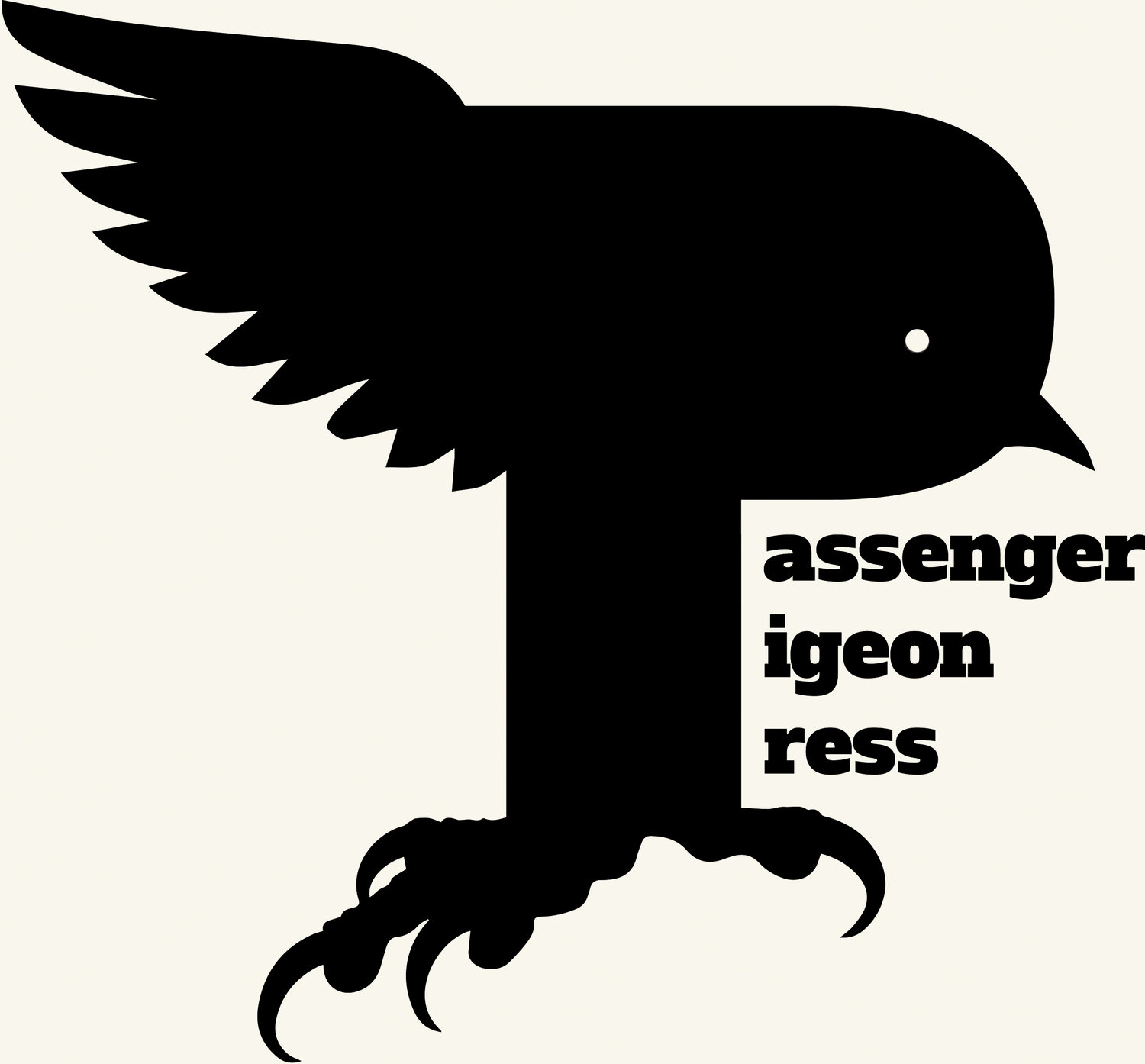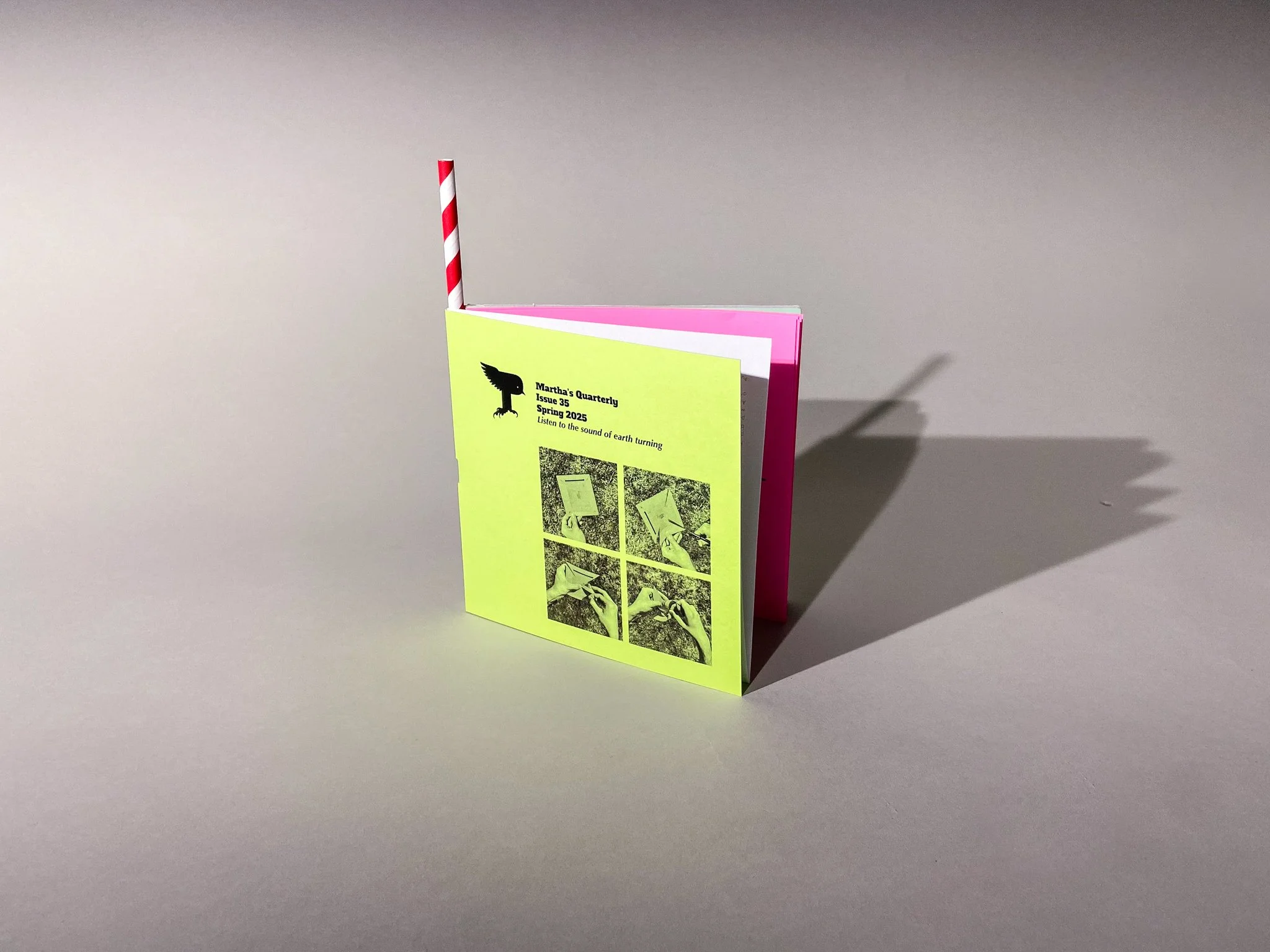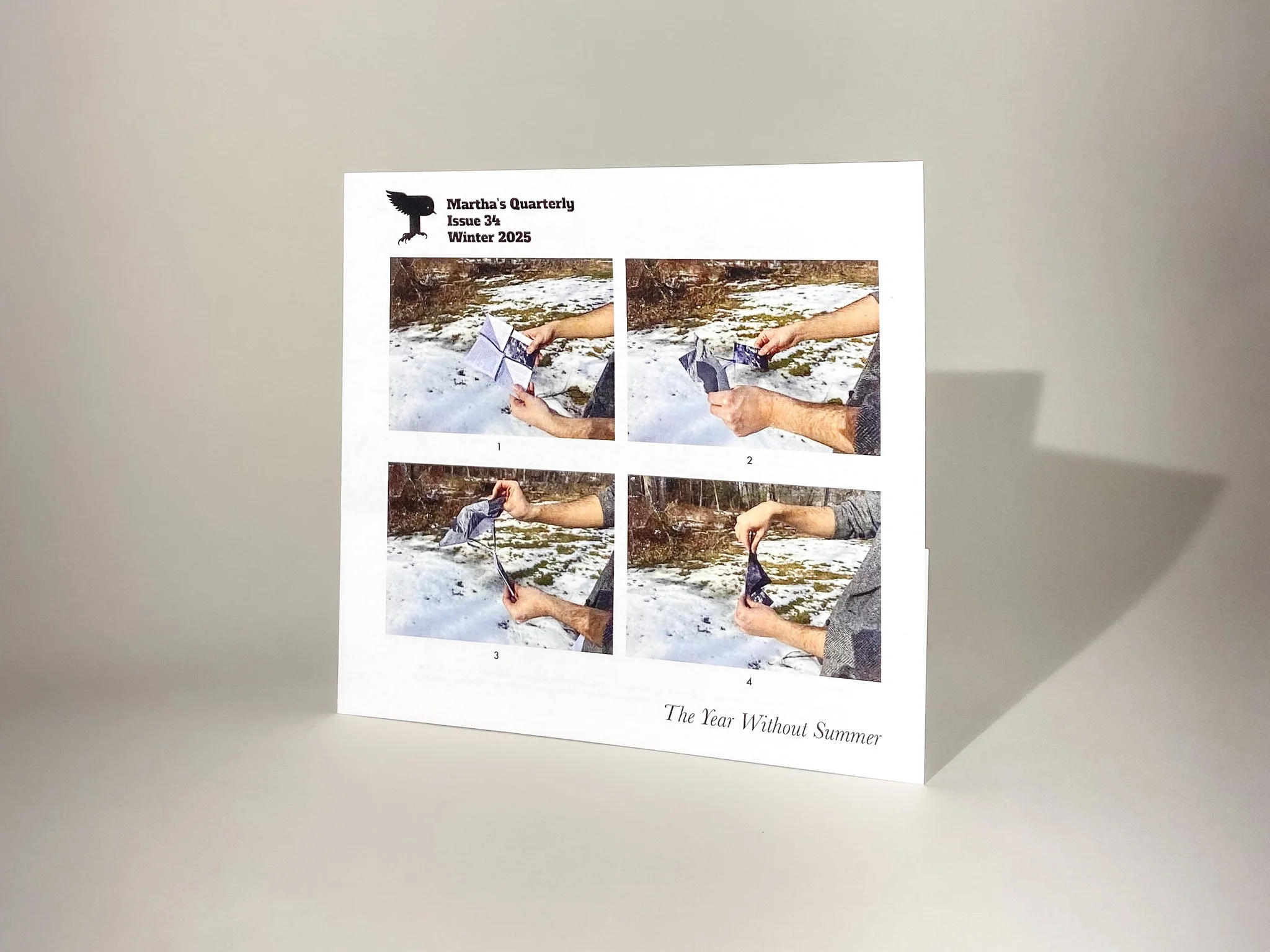MQ 2025







One subscription of four artist books a year starting with Fall 2025.
Martha's Quarterly
Issue 37
Fall 2025
Leave all creative energies uninhibited
6.5” x 4.25”
About the contributors:
JJ Dozy (1908-2004) was a Dutch geologist.
Leonard Read (1889-1983) was an American libertarian writer and the founder of the Foundation for Economic Education, one of the first free market think tanks in the United States.
Two subscriptions of four artist books a year starting with Fall 2025. Great gift for a friend! Fill out any additional addresses at check-out.
In 2017, I visited Pulau Galang, a small island in the Riau Archipelago in Indonesia. This island was part of a collection of small islands that held Vietnamese refugee camps. My parents were Vietnam War refugees at Pulau Kuku but were processed in Pulau Galang. Of the refugee camps in Indonesia, Pulau Galang still remains a historic site for visitors.
Like many artists– and people– I have long asked questions about my origin. Where am I from? Why do I think the way that I do? My visit to Pulau Galang naturally extended from those large questions I started asking at an early age. Of the many things that I saw on Pulau Galang, one of the most striking observations I noted was how built the refugee camp was. There were dormitories, schools, and a place for each major religion in Vietnam (Buddhism, Protestantism, and Catholicism) to convene.
I asked my tour guide how this was possible. I still cannot find a written record of this, but he told me that there was gold in Indonesia, and when the government saw that there was a refugee crisis coming to Indonesia, they complained to the United States, who then funnelled money through the United Nations to fund the local Indonesians to build the camps. Maybe this is true.
What is certainly true is that Indonesia is also home to the Grasberg Mine, one of the world’s largest deposits of gold and copper. Since the discovery of its mineral deposits in 1936 by Dutch geologist Jean Jacques Dozy, the Grasberg Mountain has been mined for gold, copper, and silver. At one point, the deposits in the Grasberg amounted to 30.8 billion pounds (14.0 million tonnes) of copper, 26.3 million ounces (808 tonnes) of gold and 121.3 million ounces (3773 tonnes) of silver. (1) In 1973, the American company Freeport Minerals Company took over the mining operations. By the late 70s, after the end of the war in 1975, Indonesia was one of the main locations of Vietnamese refugee camps.
While I am speculating about the connection between US mineral interests in Indonesia and my parents’ refugee history, the connection between the minerals found in the Grasberg, particularly copper, and its consequences for people around the world cannot be overstated. Copper is one of the lifebloods of our society since its vital application into electricity.
Martha’s Quarterly, Issue 37, Fall 2025, Leave all creative energies uninhibited, reflects on how the ordinary objects and amenities that we use every day are tied to the material world– hard, physical, raw materials that come from Earth. These materials are also retrieved and transformed by humans, and those processes have infrastructures that have shaped communities around the world.
The gray accordion structure of this zine features some of the hand-drawn diagrams of mineral deposits in the Grasberg from Dozy’s expedition report. The last page features a simple copper tape-wire circuit that demonstrates how copper conducts electricity. This simple circuit works when the battery is connected because the copper tape on one side connects with the positive side of the battery. The other piece of tape connects to the negative side. When the loop is complete, the current glows through the LED light, giving it enough energy to glow.
In 1858, the first transatlantic cable contained 110 tons or 246,100 pounds of copper wire. (2) A car uses a mile of copper wire to connect all of the sensors and electrical components. (3) In the book Material World, Ed Conway notes, “Electricity is almost incomprehensibly important, powerful and, when you think about it, precious. Unlike most other forms of energy it is silent and essentially invisible. It does not burn with a flame, but, at the very most, gently hums.” (4)
It's not just copper that bears nearly zero visible presence in everyday life. It’s also all the fiber optic cables that give us the ever surrounding internet and cellular signal. These cables are ultimately threads of glass spun from sand with such precision that light can pass through them at such a speed that it allows us to do practically anything we want on our phones in mere seconds.
The orange pages of this zine feature a 1958 essay called “I, Pencil” by American libertarian writer Leonard Read. (5) When it was published, it became widely read because it illustrated the vast network of people and supply chains that it took to create something so ordinary. Most people took pencils for granted, and unless you really thought about it, how this modest writing instrument came to be seems like a faraway process, almost like magic.
“Like magic” is how I think of my phone sometimes. It is an ordinary object that, if I left home without it, a panic would run through me as I would struggle to navigate the roads and continue my many social interactions throughout the day - from important work emails, my children’s activities, and nonsense on social media. This is how many know life now, and it is a result of the miraculous application of raw minerals, which seems to be at the heart of many geological tensions.
I write this on December 6th, and here are just a few headlines from the last two weeks:
“Conflict, drones, rare earths drive China supply-chain dependence fears” — Reuters, November 28, 2025
“China says it is ‘actively’ issuing rare earths general licences” — Financial Times, December 4, 2025.
“Global race to secure critical minerals for weapons threatens climate, warns report”, The Guardian, December 4, 2025.
Critical and rare earth minerals are all vital to powering cell phones, laptops, electric vehicles, and much more. They also make powerful computer chips possible. Without them, GPUs and AI accelerators (like Nvidia chips) would be slower, hotter, less efficient, and much more expensive.
At the end of “I, Pencil”, Read concludes: “The lesson I have to teach is this: Leave all creative energies uninhibited.” He does not think that anything should get in the way of people creating and producing– the market should be ever free, exciting, and moving. This is a motivational idea, something that is essential to the American ethos. At the same time, it is a difficult philosophy to blindly adopt. As remarkable as copper is, I am stunned when I look at pictures of the Grasberg Mine, this once grassy mountain that has been emptied– a ghostly pit. How do you make peace with an image like that?
But of course, we must, because copper and many other minerals are spun into the fine threads that make up our modern society. Recently, Joe Rogan interviewed Jensen Huang, President and CEO of Nvidia Corporation, which produces the world’s leading computer chips that are used for training large AI models. It is one of the more consequential companies in the world. In one part of the interview, Rogan brings up the issue of encryption and data breaches. Huang noted:
[...] the benefit of the cybersecurity defense is that socially, the community, all of our companies work together as one. Most people don’t realize this. There’s a whole community of cybersecurity experts. We exchange ideas, we exchange best practices, we exchange what we detect. The moment something has been breached or maybe there’s a loophole or whatever it is, it is shared by everybody. The patches are shared with everybody. (6)
The conversation returned to the topic of AI, where Huang compared AI to cybersecurity:
[...] the same thing is going to happen with AI. I think we all have to decide working together to stay out of harm’s way is our best chance for defense. Then it’s basically everybody against the threat. (7)
I hope Huang is right. As humans continue the alchemy of turning raw minerals into new ways of living, I hope that the primal human instinct to survive finds its logic in working together.
- Tammy Nguyen
Dozy, J. J., Erdman, D. A., Jong, W. J., Krol, G. L., & Schouten, C. (1939). Geological results of the Carstensz Expedition 1936. Leidse Geologische Mededelingen, 11(1), 68–131.
Marsh, Allison. “The First Transatlantic Telegraph Cable Was a Bold, Beautiful Failure: The Atlantic Telegraph Company’s 1858 failure set the stage for success just eight years later.” IEEE Spectrum, 31 October 2019. https://spectrum.ieee.org/the-first-transatlantic-telegraph-cable-was-a-bold-beautiful-failure#:~:text=The%20Gutta%20Percha%20Co.,of%20an%20inch%20in%20diameter.
Conway, Ed. Material World: The Six Raw Materials That Shape Modern Civilization. pp. 287. Knopf, 2023.
Conway, Ed. Material World: The Six Raw Materials That Shape Modern Civilization. pp. 256. Knopf, 2023.
I Pencil: My Family Tree as told to Leonard E. Read (Irvington-on-Hudson, New York: Foundation for Economic Education, Inc., 1999).
Rogan, Joe, host. “#2422 - Jensen Huang.” The Joe Rogan Experience, episode #2422, 3 December 2025. https://singjupost.com/transcript-nvidias-jensen-huang-on-joe-rogan-podcast-2422/
Rogan, Joe, host. “#2422 - Jensen Huang.” The Joe Rogan Experience, episode #2422, 3 December 2025. https://singjupost.com/transcript-nvidias-jensen-huang-on-joe-rogan-podcast-2422/
@passengerpigeonpress
Martha’s Quarterly, Issue 37, Fall 2025, Leave all creative energies uninhibited was produced using digital printing gray fine cardstock paper, silver 80 lbs paper, and orange 24 lbs paper. The typefaces Optima and Futura were used throughout in various sizes and styles.On the orange pages, “I, Pencil” was reproduced from the Foundation for Economic Education and is free for use for educational and academic purposes. Images and pages from “Geological Results of the Carsten's Expedition of 1936” by JJ Dozy are featured in this publication on the gray accordion pages. This report was released under the CC-BY 4.0 ("Attribution") License by Naturalis journals & series. The image of the Grasberg Mine included on the gray pages was sourced from the creative commons. This issue also includes a coin cell battery, copper tape, and a small LED light, which can all be used together to create a paper circuit. This issue was designed by Tammy Nguyen with editing from Holly Greene. Production by Holly Greene and Chance Lockard.
Published in December 2025, this is an edition of 250.
The last ever Martha’s Quarterly will be Issue 40, Summer 2026. If you want to subscribe for a full year (4 issues) of Martha’s Quarterly, this is the last season to do so. After this issue, recurring subscriptions will no longer renew, and new issues will be only available for individual purchase.
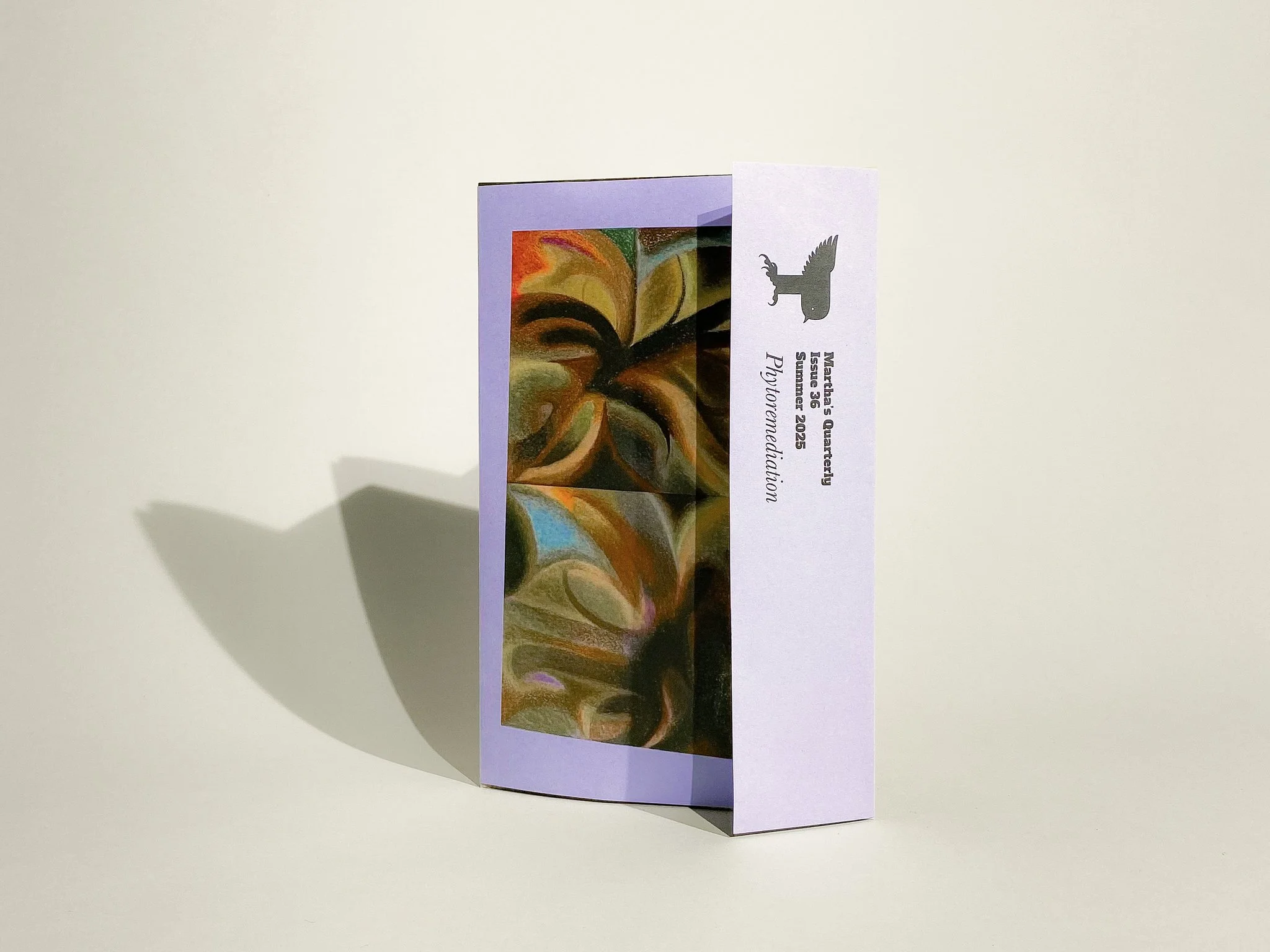
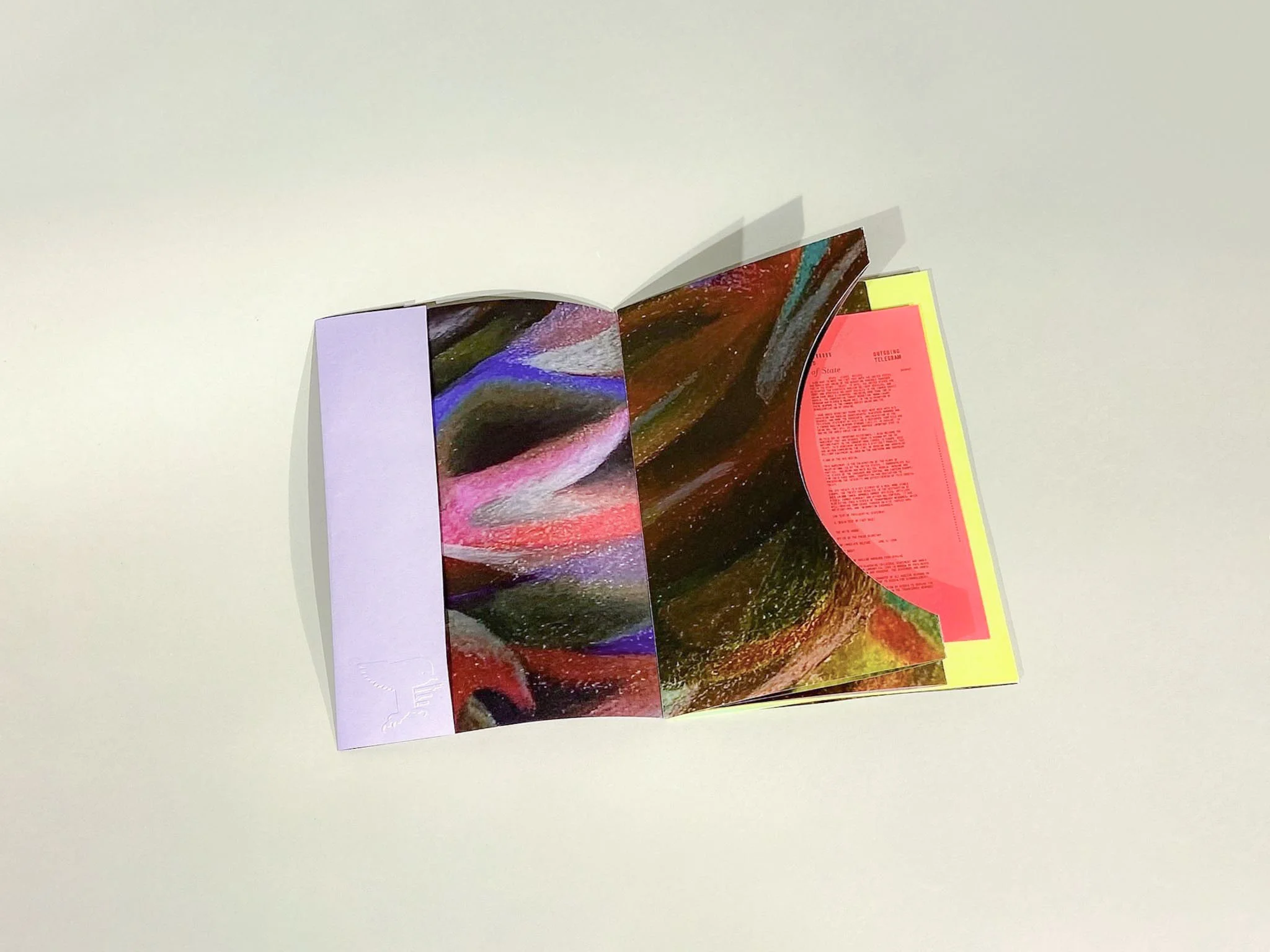
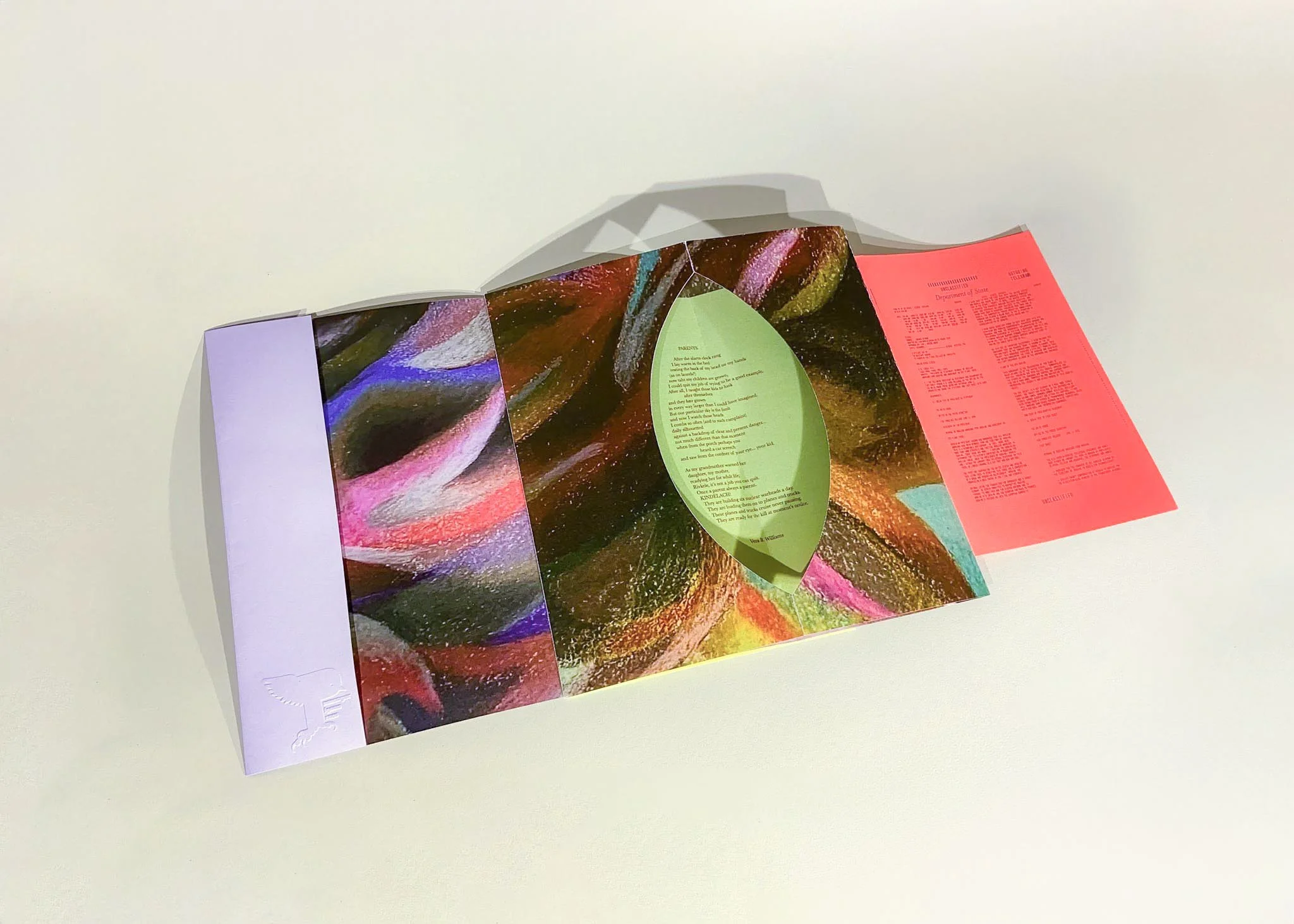
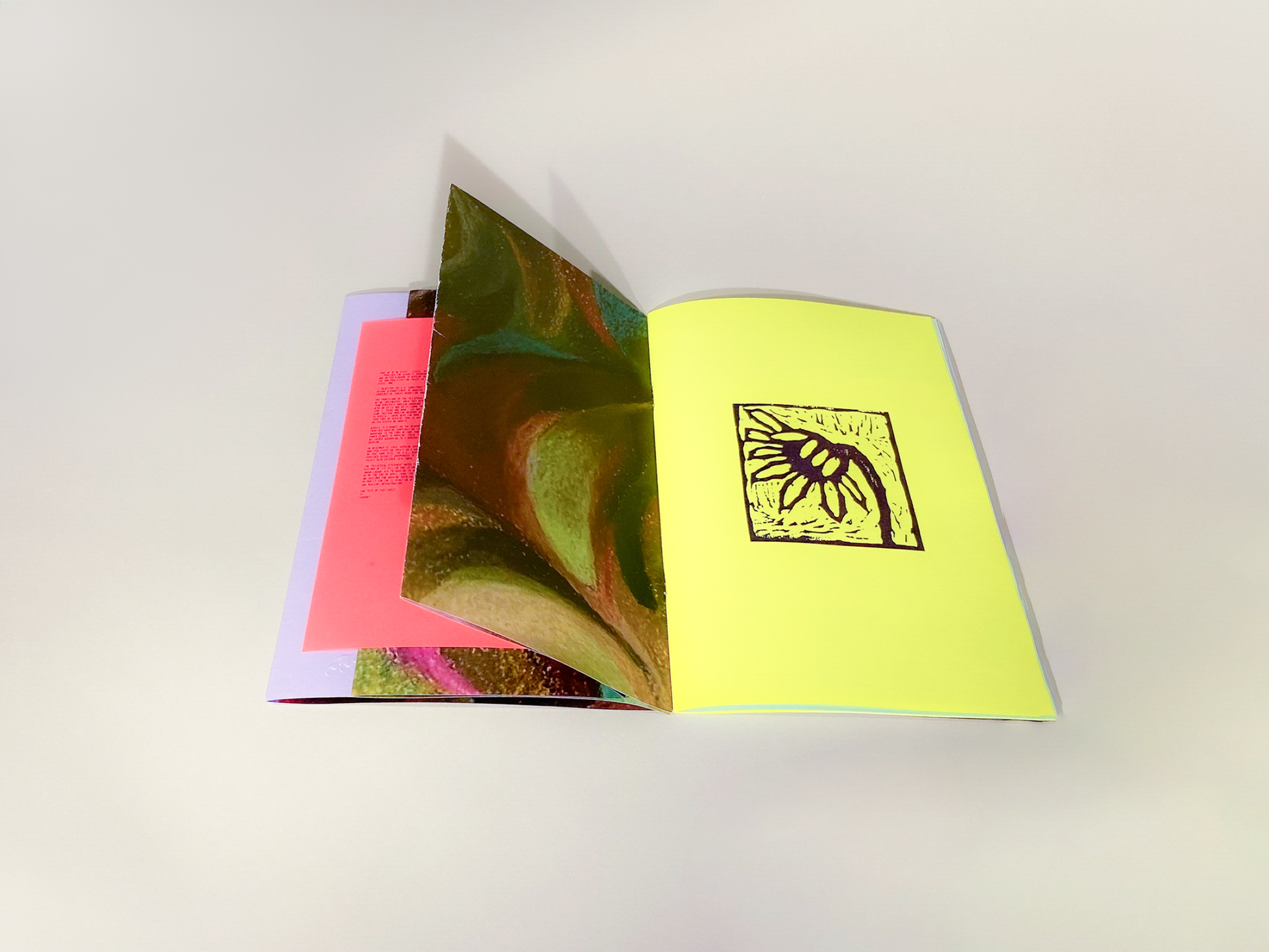
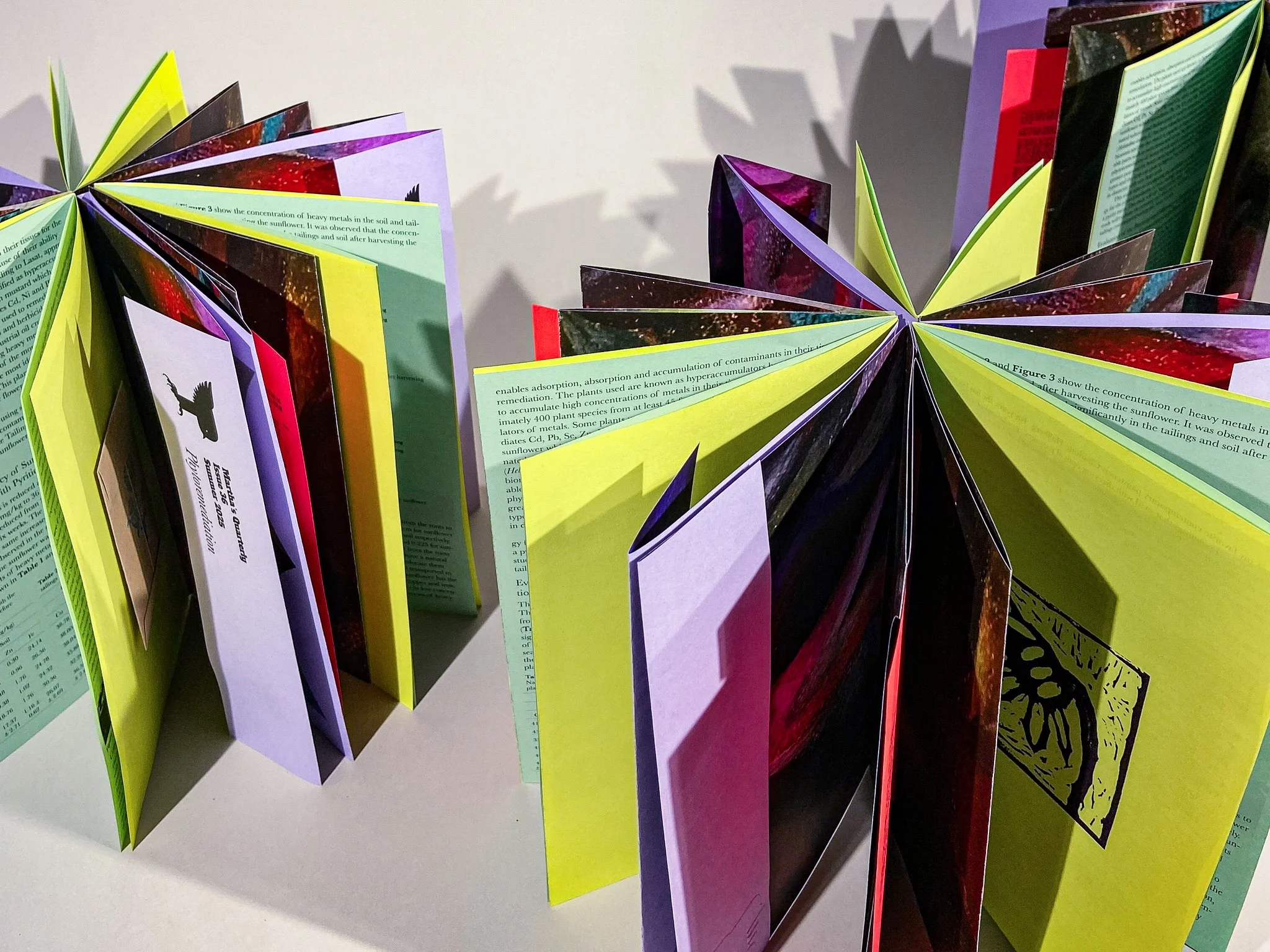
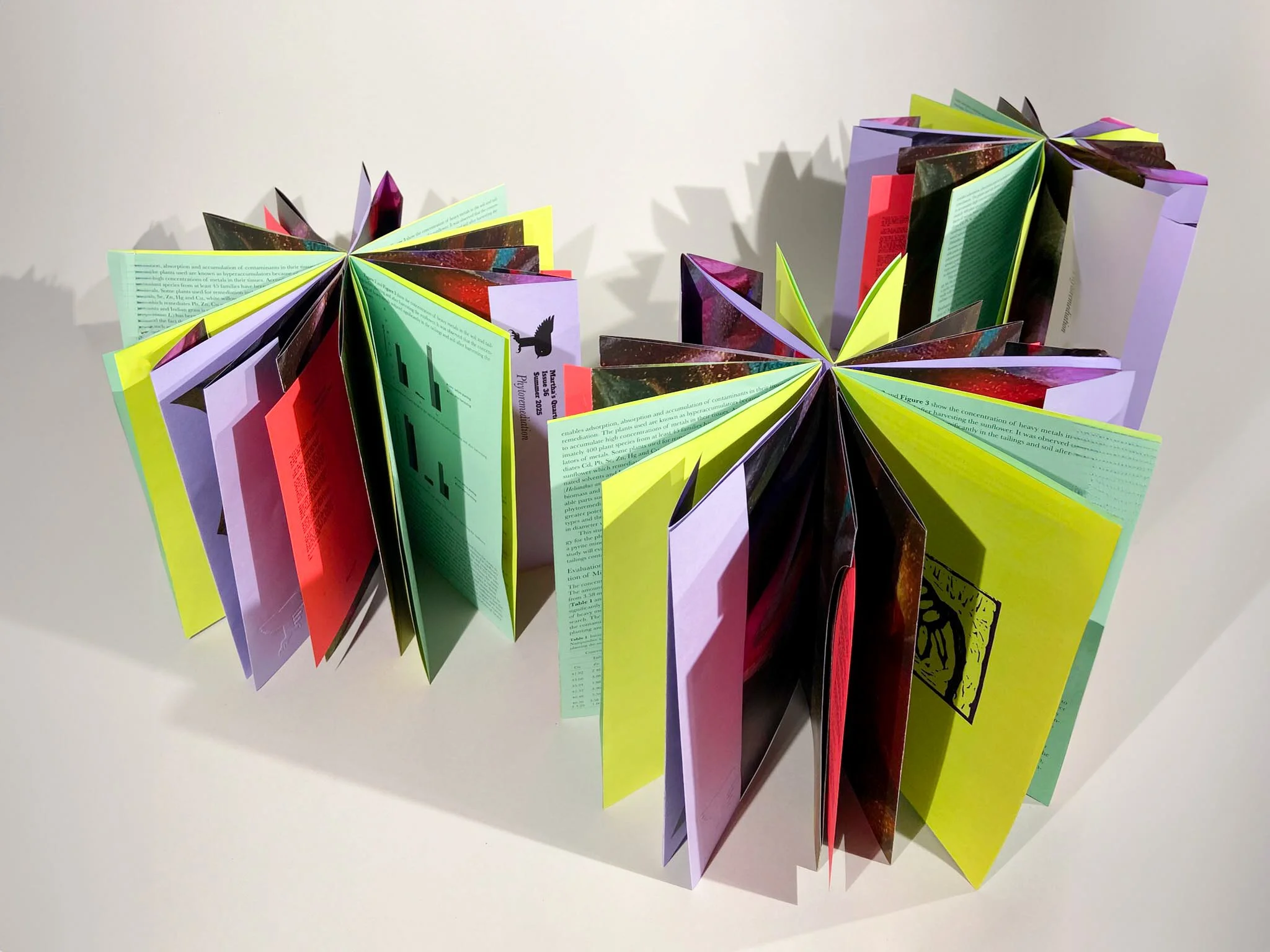
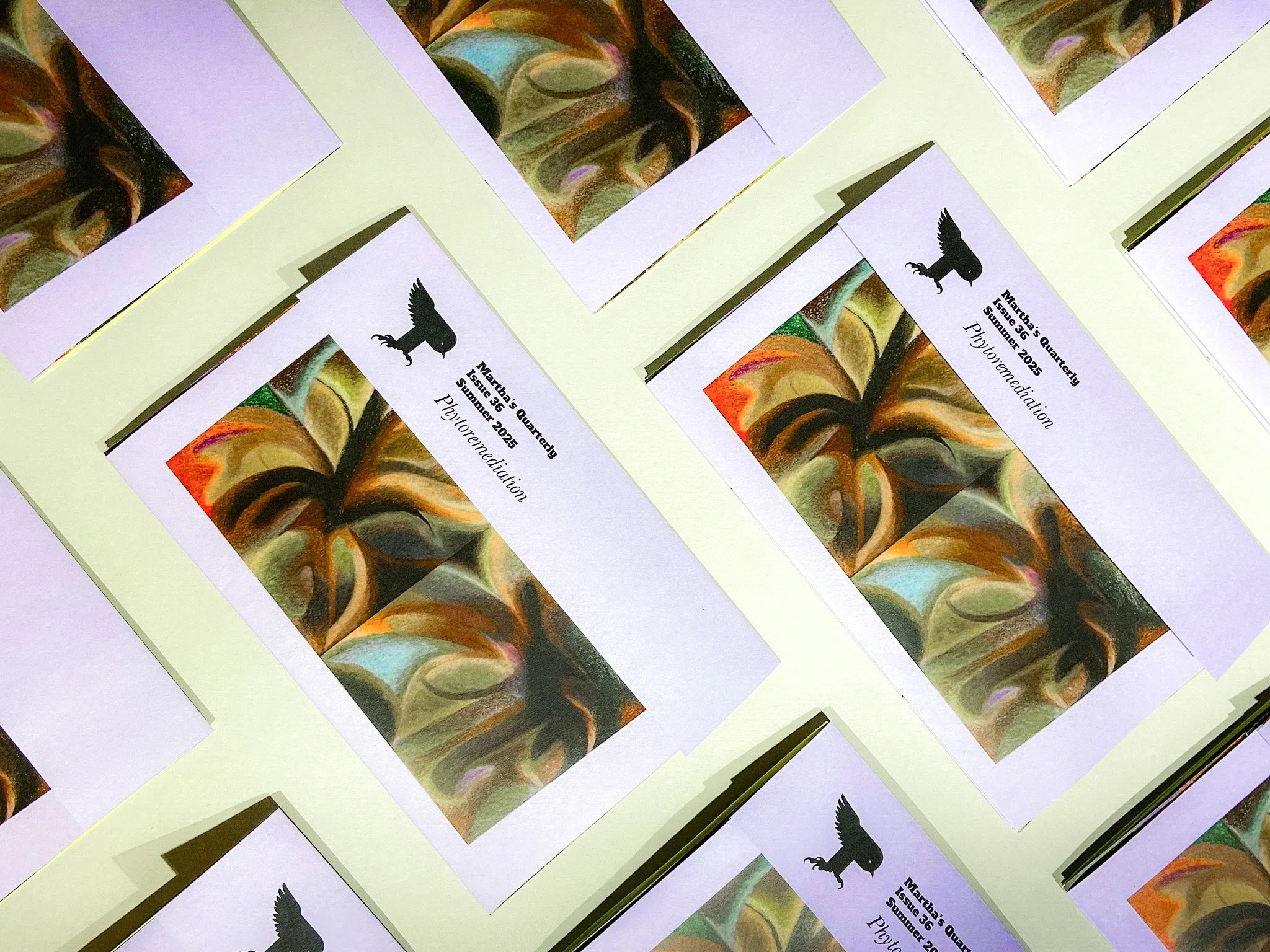
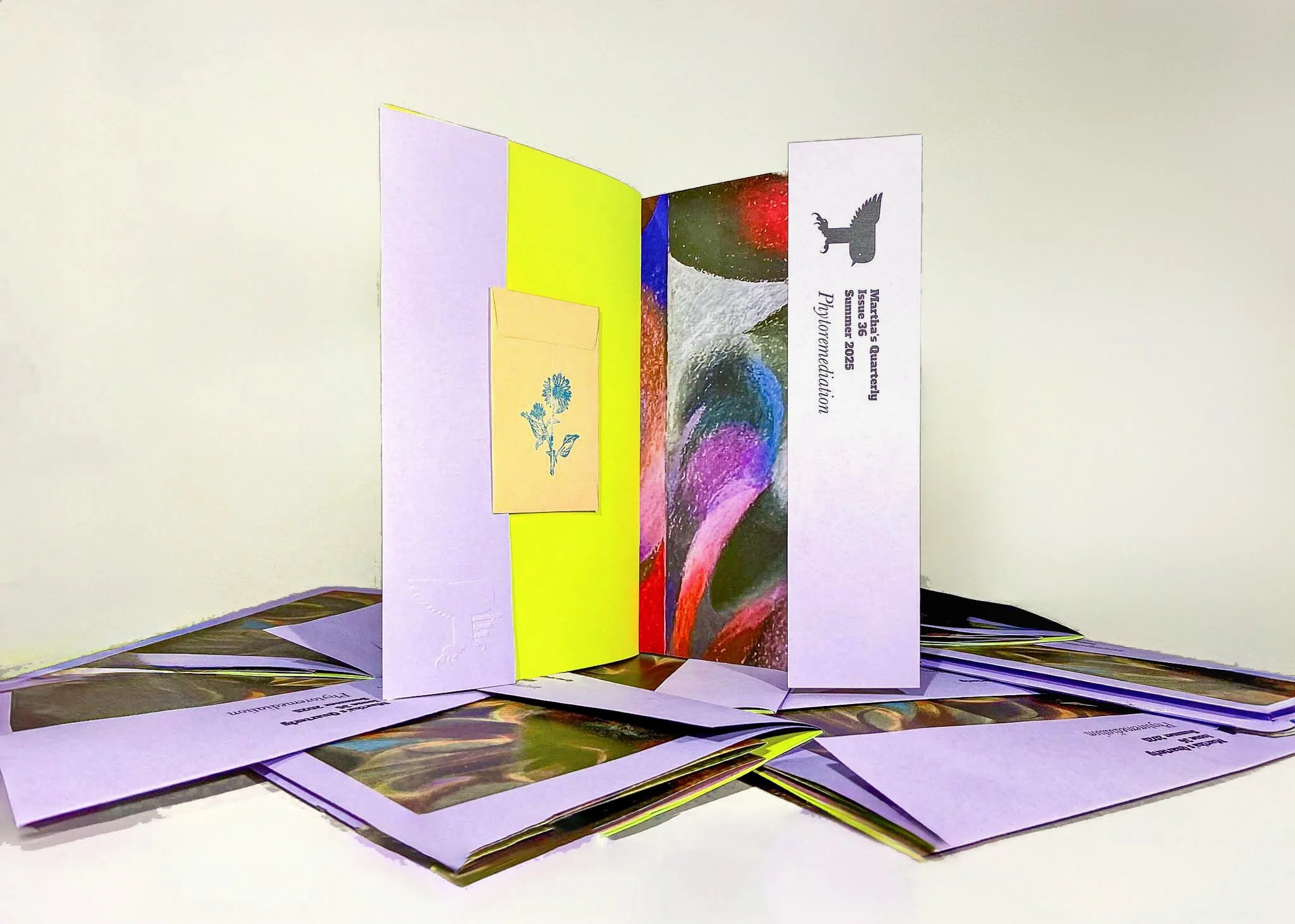
Martha's Quarterly
Issue 36
Summer 2025
Phytoremediation
5.5” x 8.5”
About the contributors:
Charlotte Hallberg lives and makes paintings in the Catskill Mountains of New York, alongside her small family, cat and gardens. Though technically not mountains, the topography does provide innumerable opportunities to get lost in, both up close and at a distance. She tries to make time to stop and smell most of the flowers, and grows a few of her own.
Vera B. Williams (January 28, 1927 – October 16, 2015) was an American children's author and illustrator. She has won numerous awards for children’s literature, including several for her book, A Chair for My Mother, and she was the U.S. nominee for the Hans Christian Andersen Award in 2004.
Mususu Kosta Mpongo Kaonda is a scholar, lecturer and consultant in the School of Mines, Department of Metallurgical Engineering at the University of Zambia (bio sourced from Kaonda’s Linkedin).
Kaela Chileshe is an environmental scientist with more than 10 years of experience in the Mining Industry as a Process Engineer (bio sourced from Chileshe’s Linkedin).
One of my favorite contemporary painters is Charlotte Hallberg. For years, she has been making abstract paintings that swirl with dizzying optical passages– gradations of color that offer contradiction and awe. What I know– because I have seen these objects in real life– is that the physicality of the paints, their buttery application, the subtle sculpting of the blends, and the resistance of the colors sitting on their smooth, stiff surface makes these paintings paradoxical. They are able to be objectively solid, and yet they exude light and air.
Hallberg’s work is featured all over this issue of Martha’s Quarterly. The four paintings that have been laid out, cropped, and zoomed in are part of a new series she has been working on using oil pastel on paper. They hold the same tension that I have just described. The oil pastel has weight, and you can see how it resists the paper and yet describes a sensational sense of light, air, and space. I thought that these particular works could be a good starting point to continue the questions that Martha’s Quarterly has been asking over the last several issues: How do you make ideas that are larger than life palpable and relatable? These are enormous subjects such as war, climate, and God.
Recently, I have been researching the Daniel Ellsberg papers at the University of Massachusetts at Amherst. Ellsberg was a US military analyst who became famous for leaking the Pentagon Papers in 1971, which exposed the US government’s deception about the Vietnam War. (Several administrations from Truman to Johnson had privately acknowledged that they were losing the war, but continued to escalate the conflict.) Beyond this, Ellsberg was also known for his contributions in foreign policy and his anti-nuclear advocacy. His papers were expansive, and I barely scratched the surface of this archive.
For my new artworks, I became drawn to a collection of anti-nuclear poetry that Ellsberg collected. These articles were little pamphlets, some of them seemed like activist zines, and many had the hallmarks of DIY publishing– stapled together, reproduced on a copy machine, etc. They were modestly made and seemed to offer solidarity with people who were critical of the government’s enthusiasm for nuclear proliferation. One particular pamphlet titled “May We Will Grow” featured relief prints and poems which became inspirational. Martha’s Quarterly, Issue 36, Summer 2025, Phytoremediation features one of these poems, Parents by Vera B. Willams. The original page of the poem featured an illustration of a sunflower, which is reprinted in this issue.
Vera B. Williams was actually the author of one of my favorite books as a child entitled A Chair for my Mother, a story about the efforts of a girl, her mother, and her grandmother to save money in a jar to buy a new armchair after their furniture was destroyed in a fire. The poem Parents shares the theme of family, but it expresses the feeling of powerlessness within parents who want to protect their children from global threats such as nuclear war, which are sublimely out of their control.
This poem is not visible when you first open this zine. In order to read it, you have to pull on a fluorescent red sheet of paper which features a White House memo from 1996 announcing that Ukraine had removed all of its 4,000+ nuclear warheads. In the peace ceremony after this removal, defense officials of the United States, Russia, and Ukraine scattered thousands of sunflower seeds over the missile site.
The sunflower has commonly been used in nuclear diplomacy. There are fields of these flowers in Hiroshima that not only symbolize life, but the plant itself also has the ability to absorb radiation. Passenger Pigeon Press has explored this flower in this context in Issue 6 of Martha’s Quarterly featuring the nuclear non-proliferation expert Lovely Umayam, and in our deeper collaboration with her in B(L)OOM. In this issue, I invite you to think about the sunflower as the tangible object that pulls in the extraordinary subjects provoked by Hallberg’s imagery.
Phytoremediation– the title of this Martha’s Quarterly– is a method of environmental clean up where plants are used to absorb, break down, or stabilize contaminated environments. This quarterly features an edited version of a 2023 study that came out of the University of Zambia by Mususu Kosta Mpongo Kaonda and Kaela Chileshe. This study demonstrates how the sunflower efficiently absorbs heavy metals in its shoots and leaves, achieving environmental cleanup through its harvest. (1)
As I mentioned in the Spring 2025 quarterly, this Summer marks the 80th anniversary of the nuclear bombings of Hiroshima. This historic event is both easy and impossible to understand. I want to draw that contradiction back to Hallberg’s oil pastel on paper artworks, which also look like colorful soil samples in the context of all these subjects. As current events around the globe perpetuate anxiety amongst many, perhaps the ordinary sunflower is something we can think about that is proactive, effective, and lovely. Enclosed in this issue is a small envelope of sunflower seeds, best planted next spring after the last frost.
- Tammy Nguyen
(1) Kaonda, M. and Chileshe, K. (2023) Assessment of Sunflower (Helianthus annuus L.) for Phytoremediation of Heavy Metal Polluted Mine Tailings—A Case Study of Nampundwe Mine Tailings Dam, Zambia. Journal of Environmental Protection, Vol. 14, No. 7, 481-492. doi: 10.4236/jep.2023.147028.
@passengerpigeonpress
Martha’s Quarterly, Issue 36, Summer 2025, Phytoremediation was produced using digital printing on 20 lb. copy paper. There are stamped coin envelopes that contain sunflower seeds inserted in the publication. The typeface Baskerville was used throughout in various sizes and styles. The paintings by Charlotte Hallberg were reproduced with the artist’s permission. The study by Mususu Kosta Mpongo Kaonda and Kaela Chileshe is open access in the creative commons. Vera B. Williams’ poem and the accompanying sunflower image were sourced from a zine found in the Ellsberg Papers Archive at the University of Massachusetts Amherst. This issue was edited and designed by Tammy Nguyen with assistance and production by Chance Lockard and Holly Greene.
Published in September 2025, this is an edition of 250.
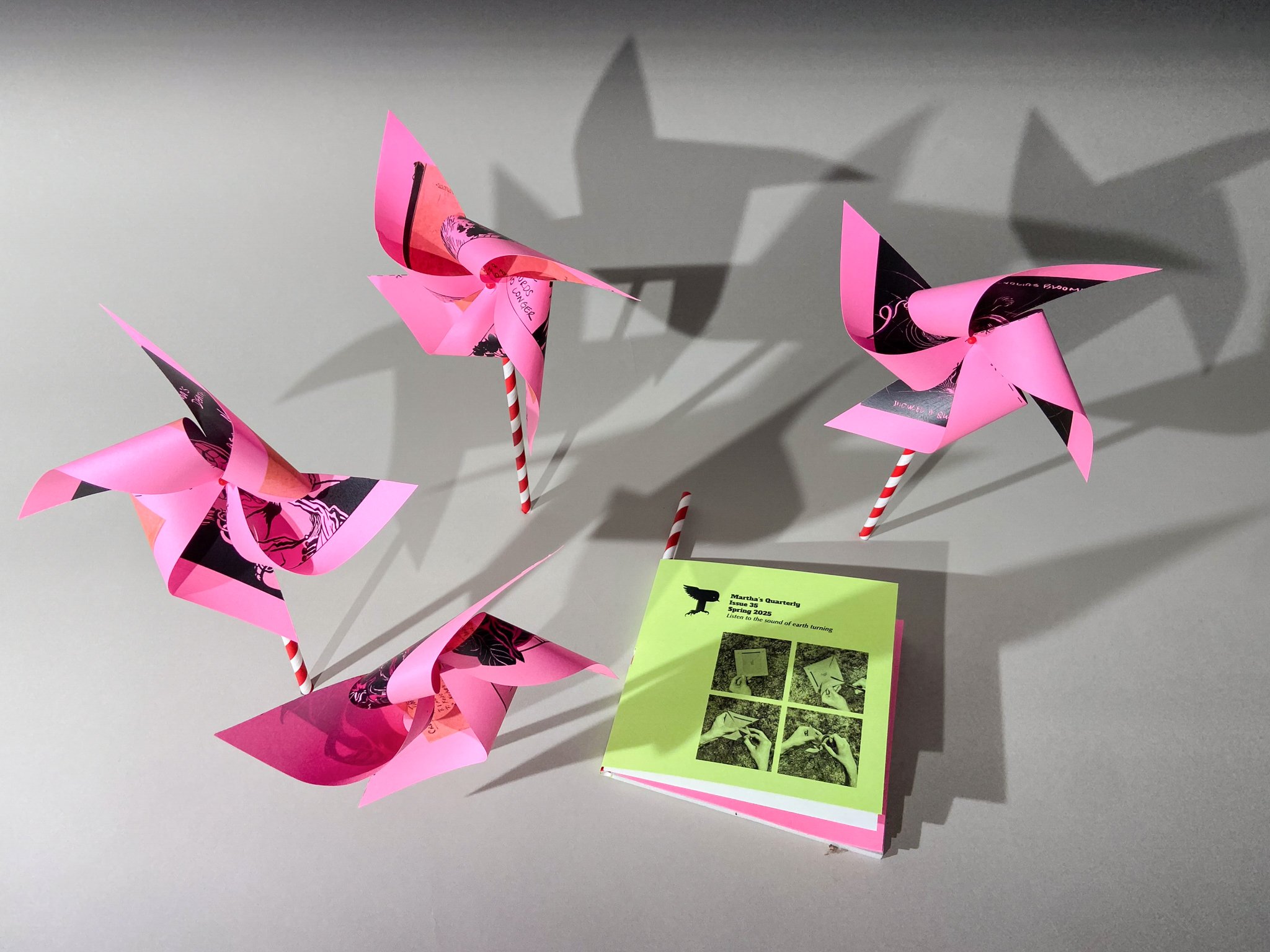


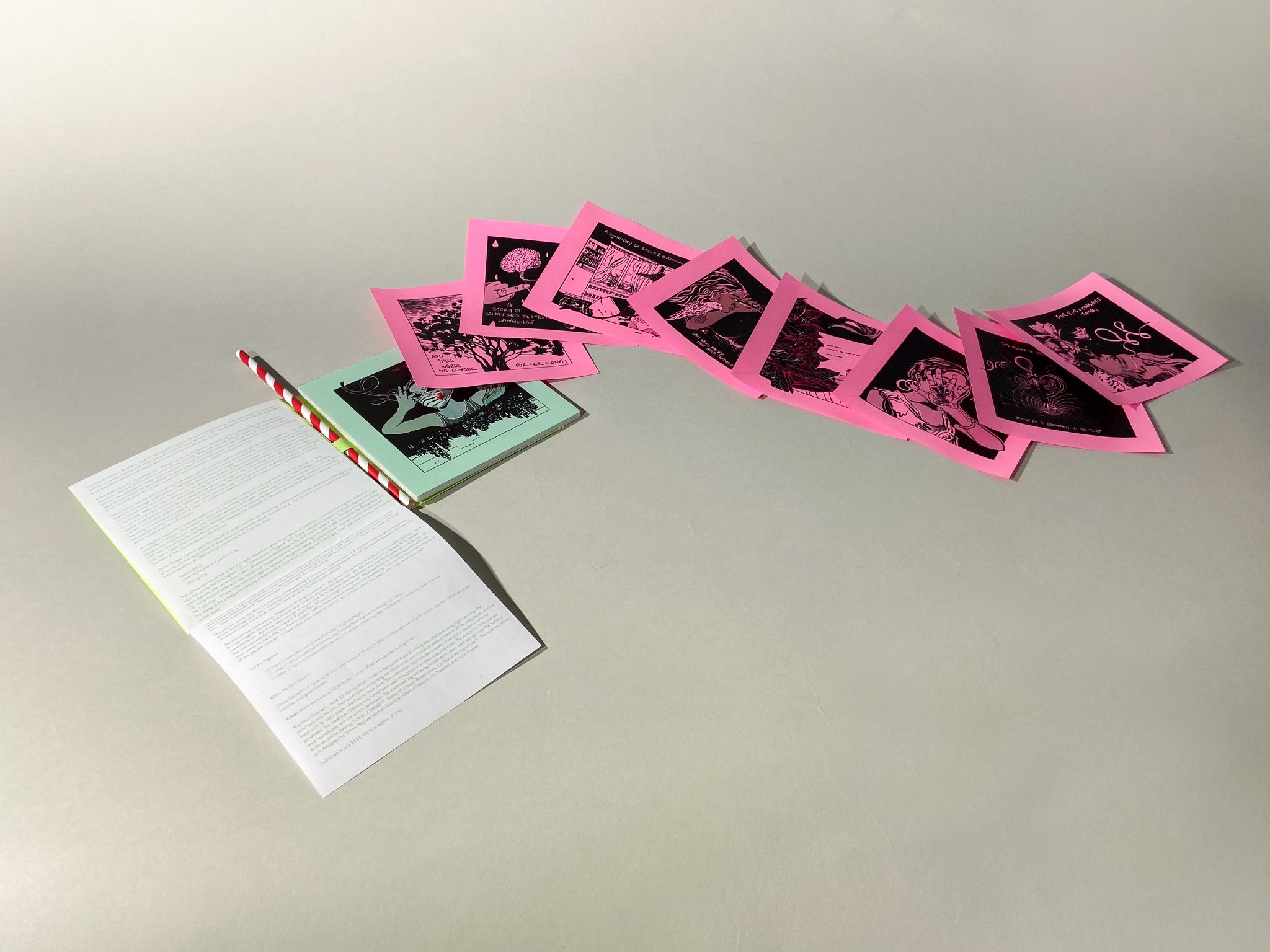
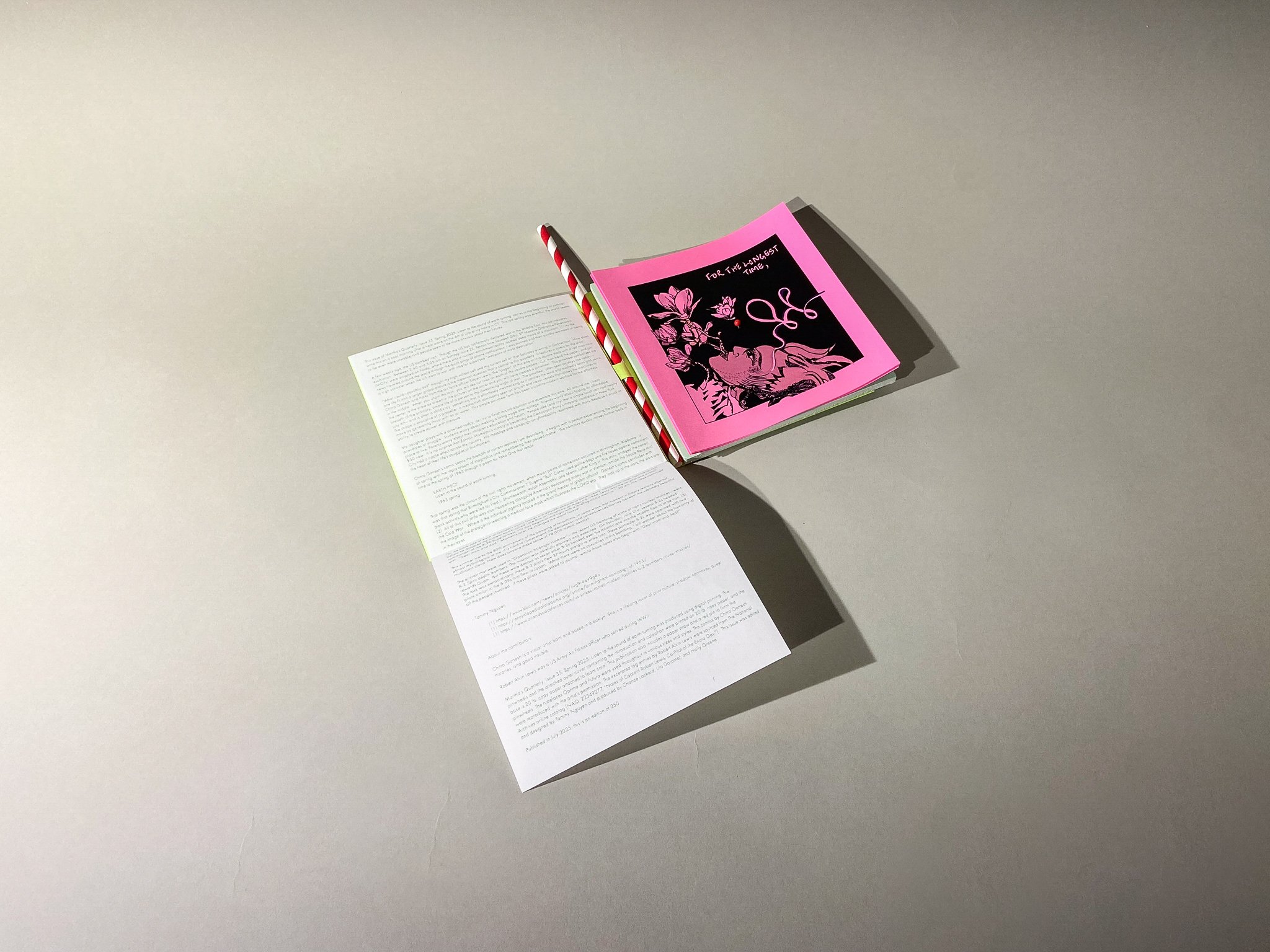
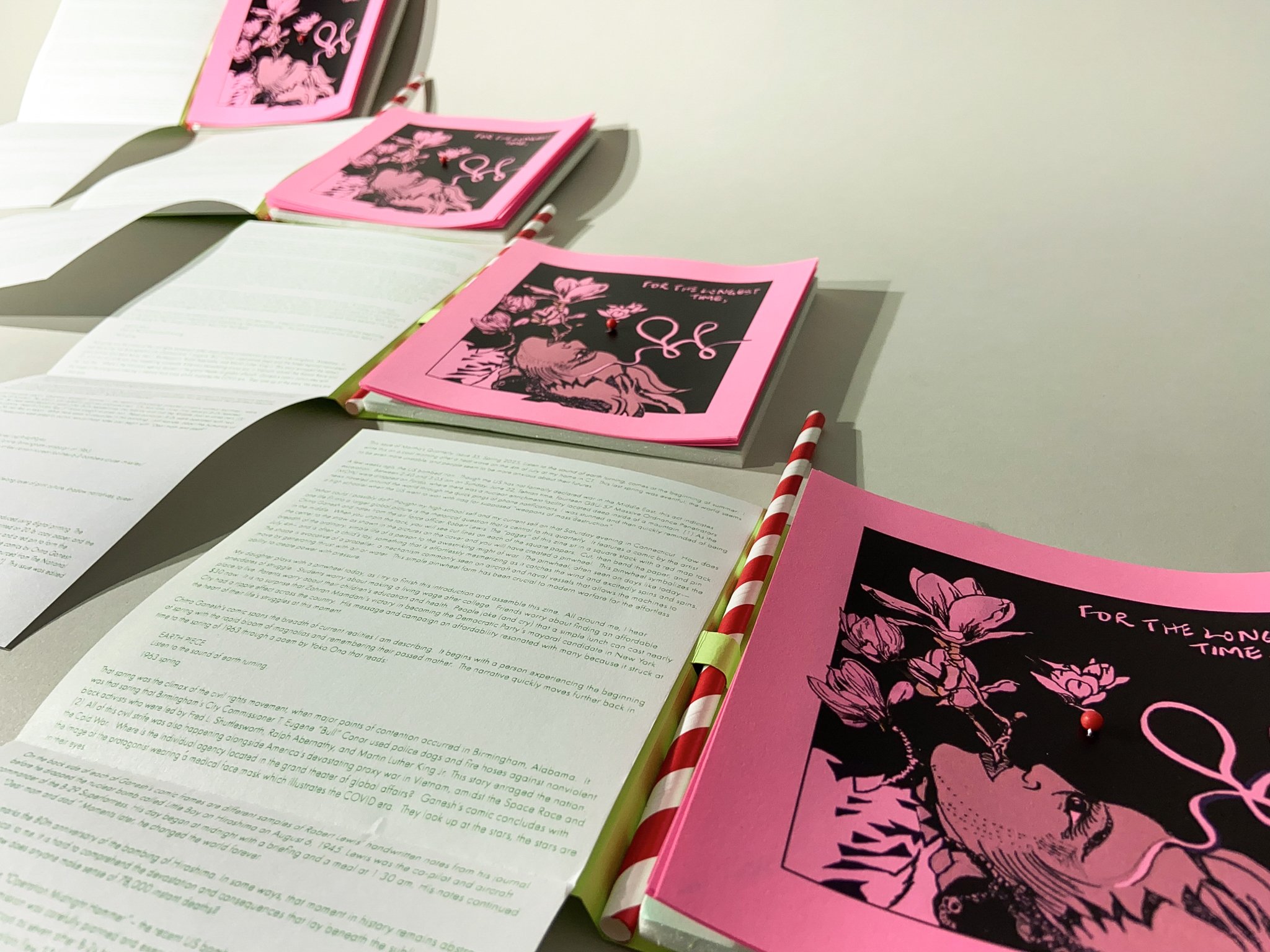
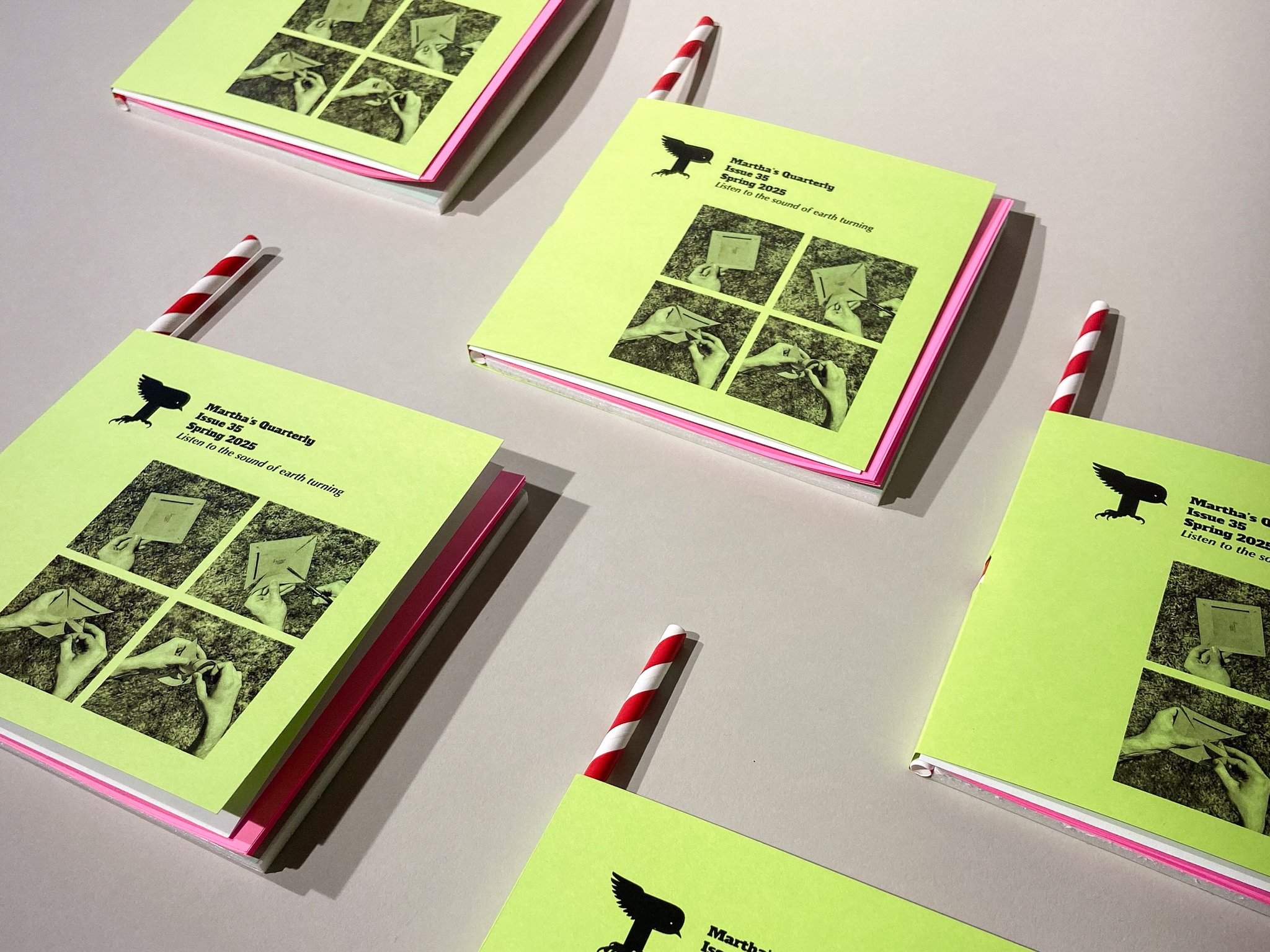
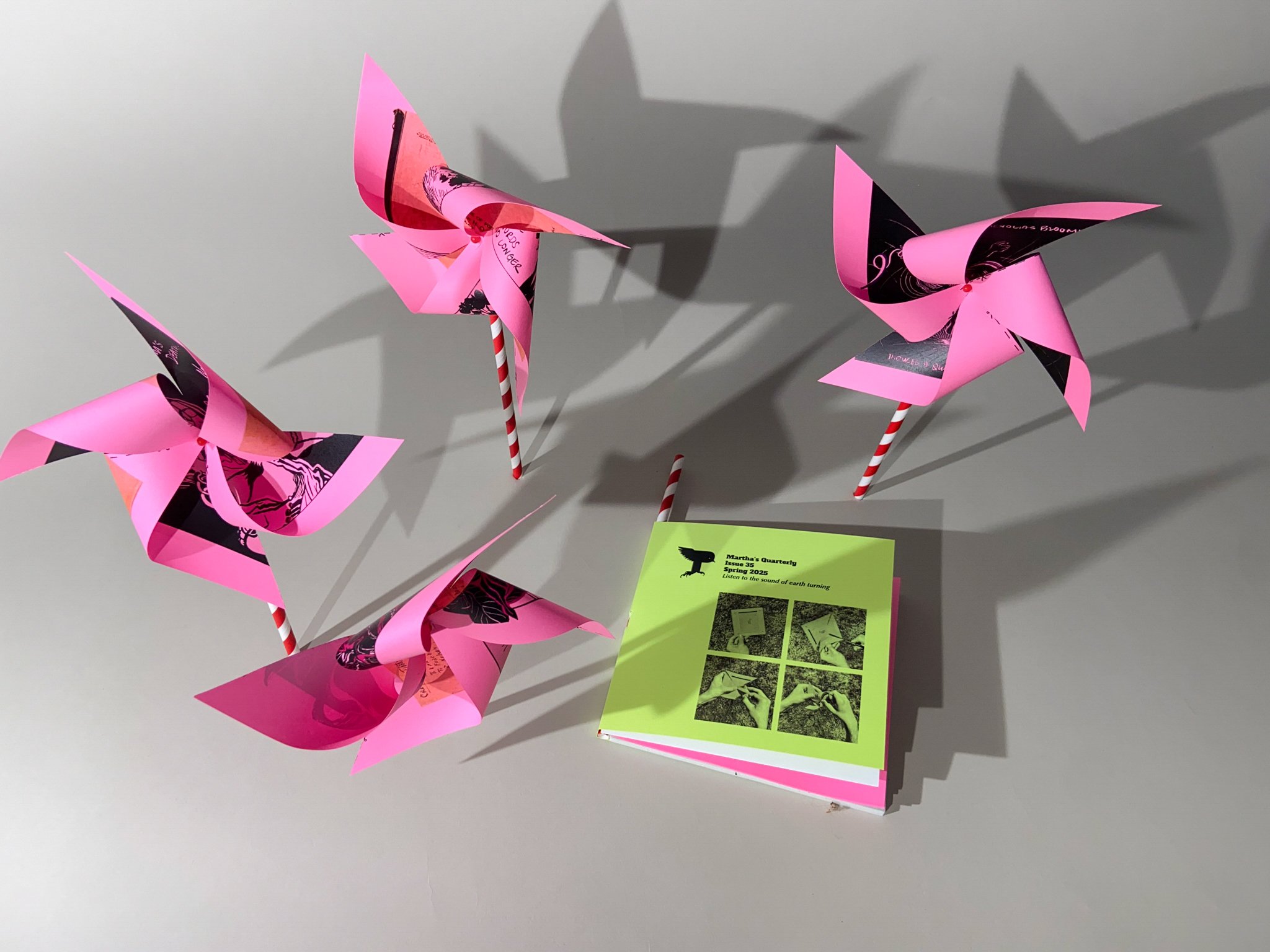
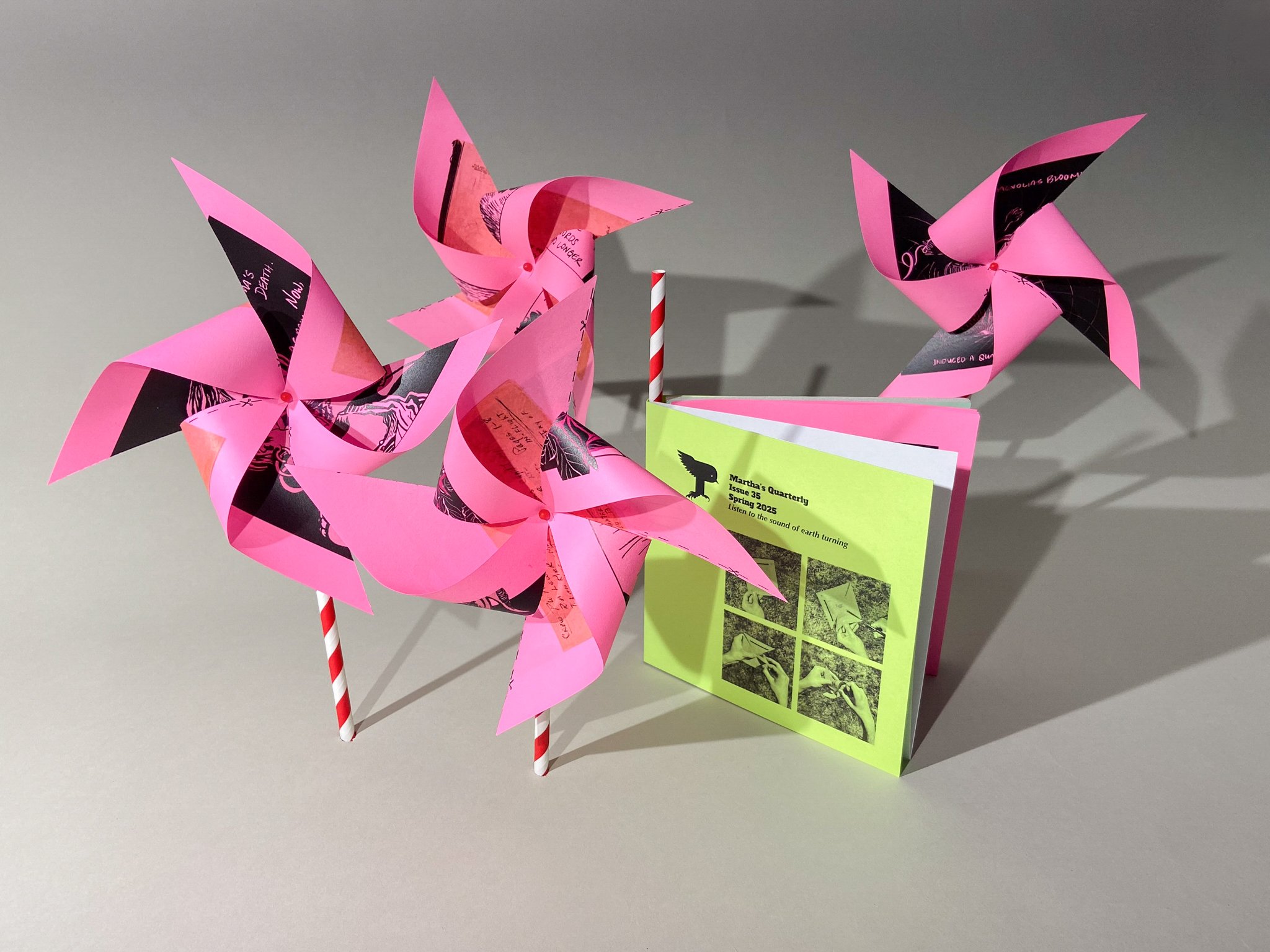

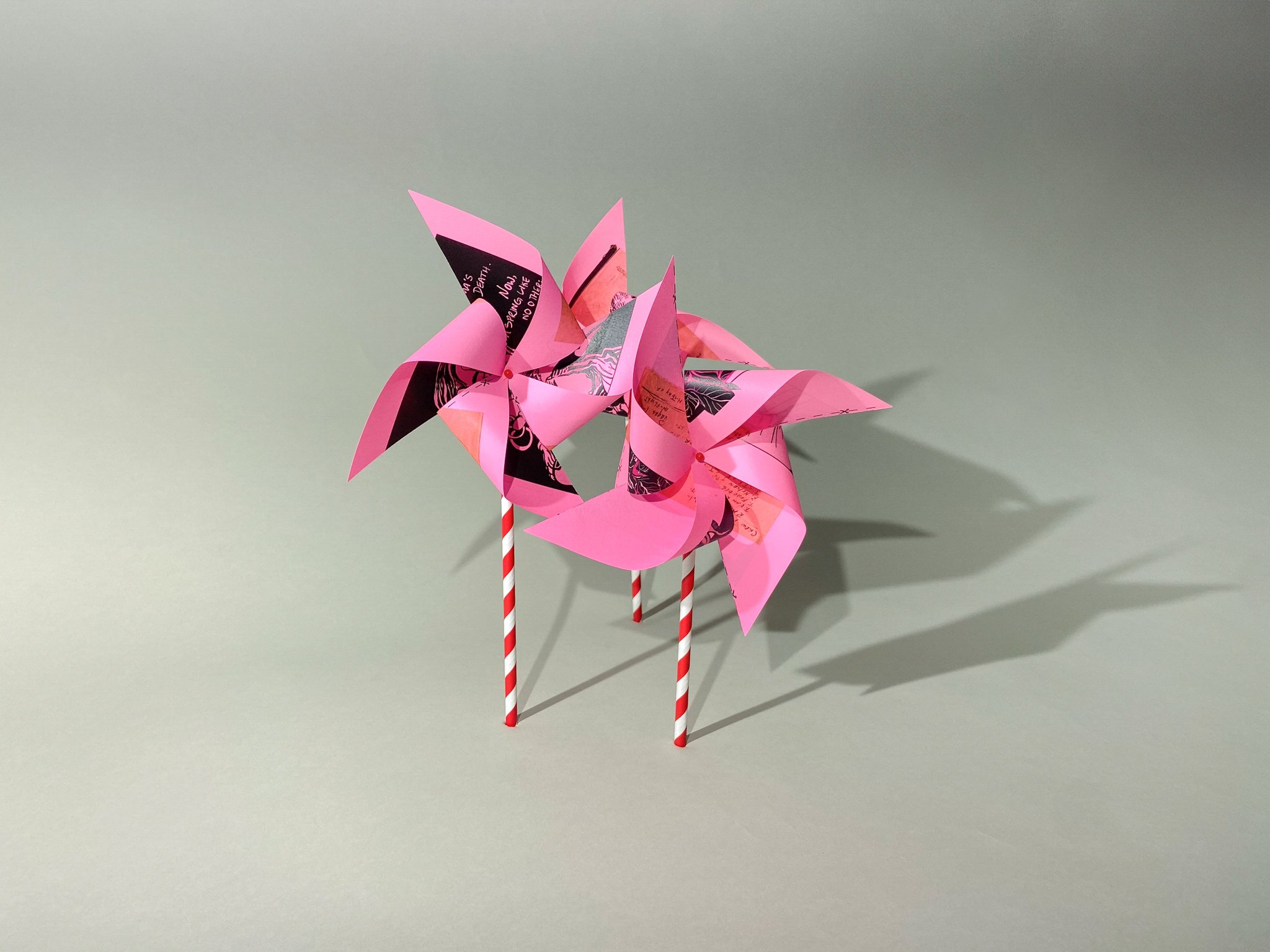
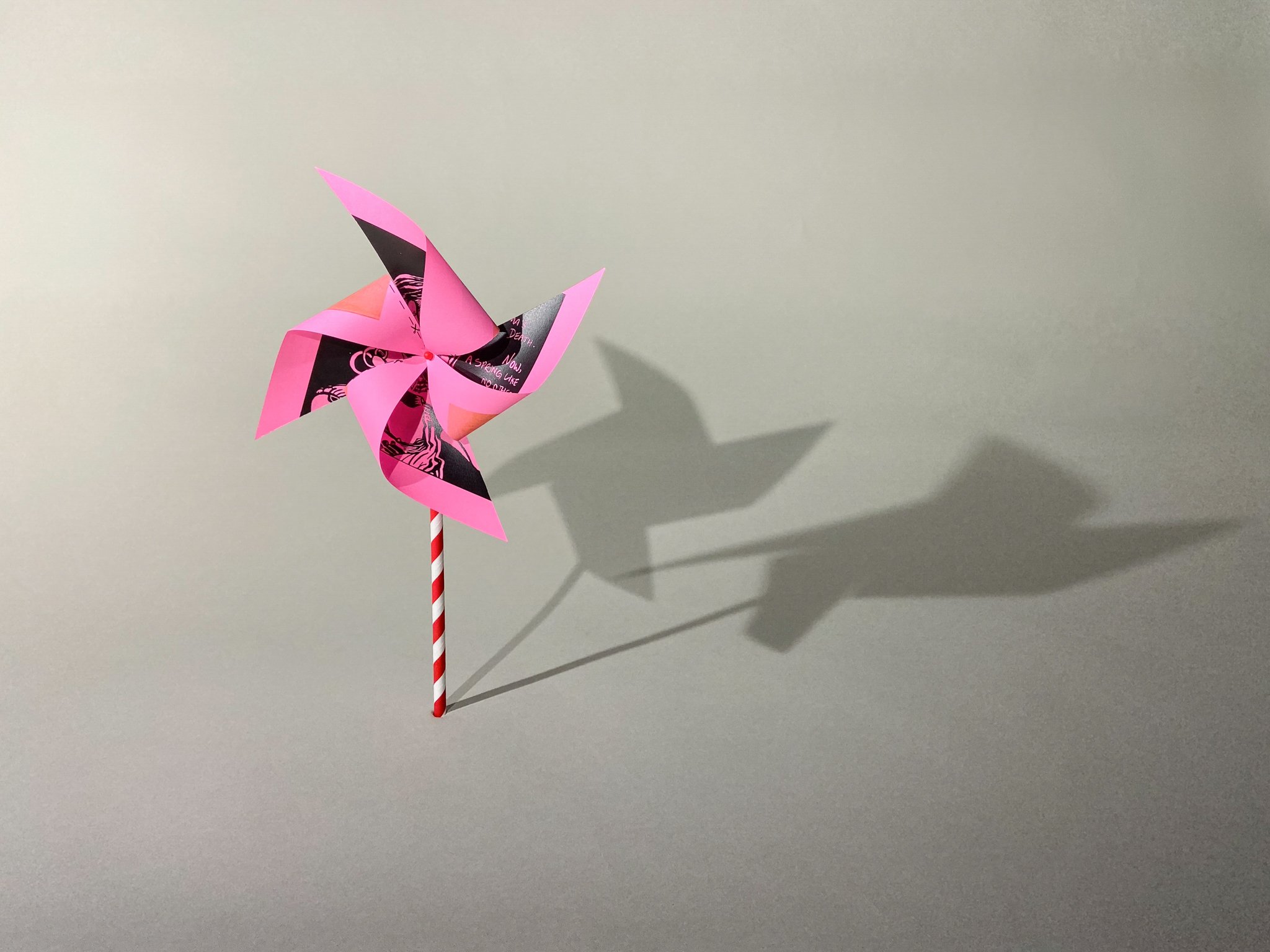
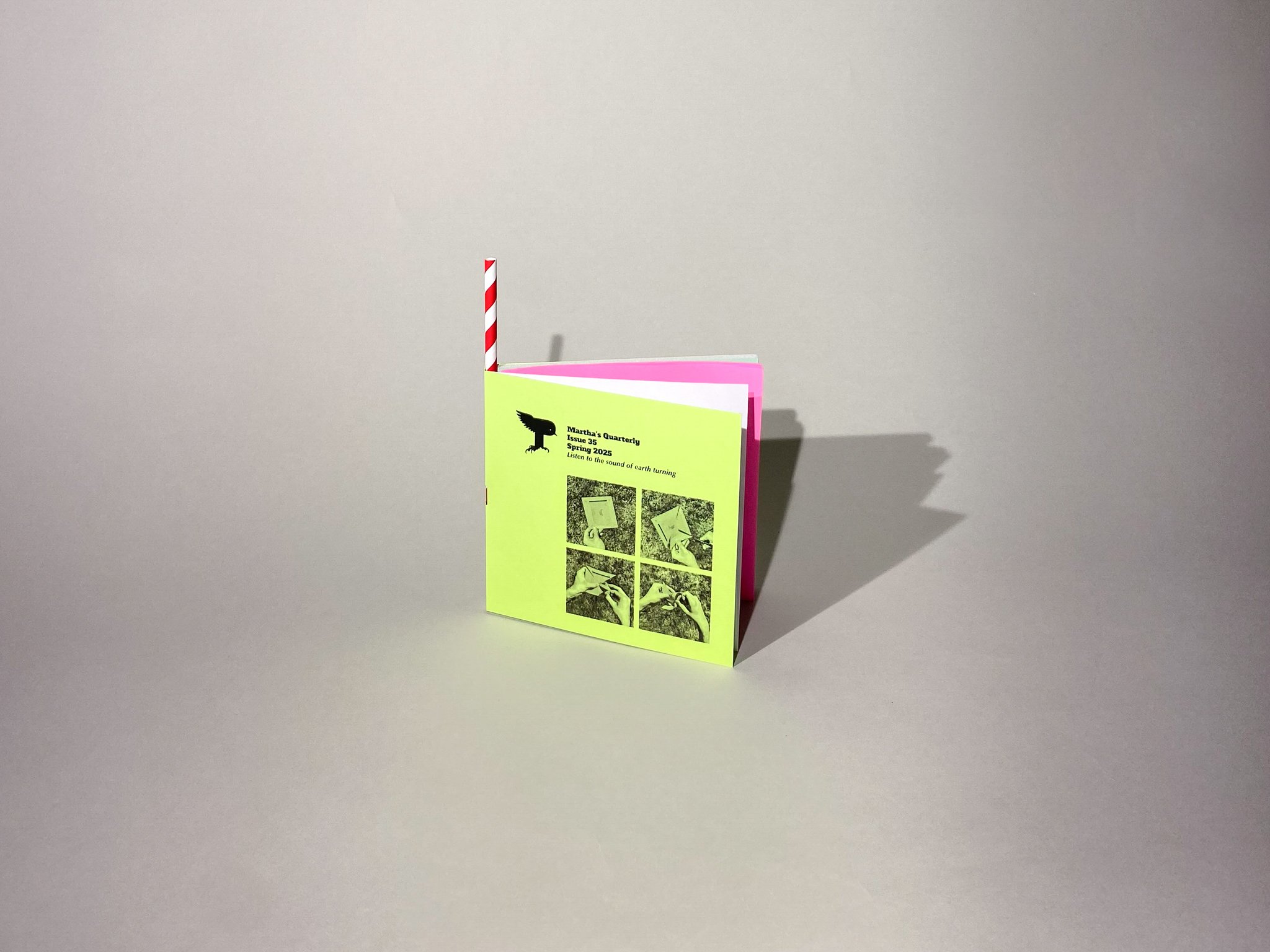
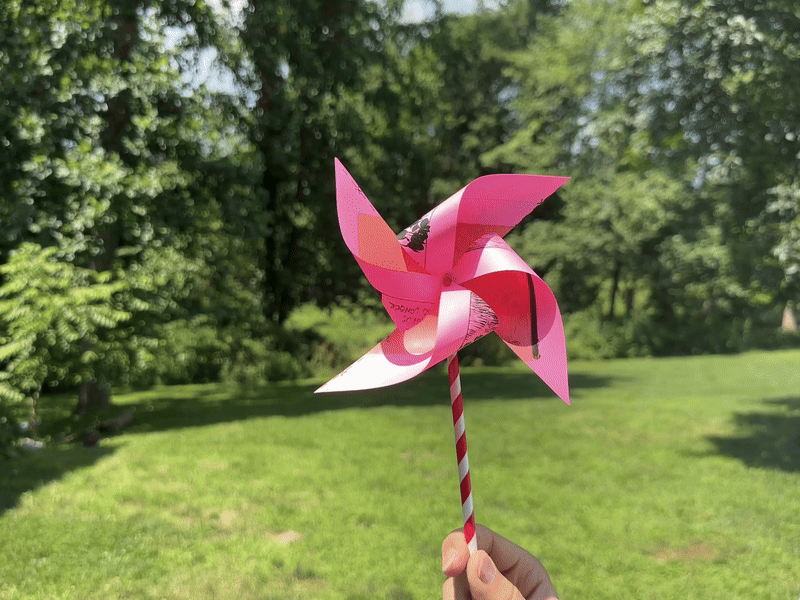
Martha's Quarterly
Issue 35
Spring 2025
Listen to the sound of earth turning
7.875” x 5.875”
About the contributors:
Chitra Ganesh is a visual artist born and based in Brooklyn. She is a lifelong lover of print culture, shadow narratives, queer histories, and good trouble.
Robert Alvin Lewis was a US Army Air Forces officer who served during WWII.
This issue of Martha’s Quarterly, Issue 35, Spring 2025, Listen to the sound of earth turning, comes at the beginning of summer. I write this on a cool morning after a heat wave on the 4th of July at my home in CT. This last spring was eventful; the world seems to be even more unstable, and people seem to be more anxious about their futures.
A few weeks ago, the US bombed Iran. Though the US has not formally declared war in the Middle East, this act indicates escalation. Between 2:40 and 3:05 am on Sunday, June 22, Tehran time, fourteen GBU-57 Massive Ordnance Penetrators (MOPs) were dropped on Fordo, where there was a nuclear enrichment facility located deep inside of a mountain. (1) As the news traveled around the world through the quick pings of phone notifications, I was stunned and then quickly reminded of being a high schooler when the US went to war with Iraq for supposed “weapons of mass destruction”.
“What could I possibly do?” thought my high-school self and my current self on that Saturday evening in Connecticut. How does one life fit into a larger global picture is the rhetorical question that is central to this quarterly. It features a comic by the artist Chitra Ganesh and notes from the air force officer Robert Lewis. The “pages” of this zine sit in a square stack with a red map tack in the middle. When you unpin the tack, you will see cut lines on each of the square papers. Cut, then bend the paper, and pin the center to the straw as shown in the pictures on the cover and you will have created a pinwheel. This pinwheel symbolizes the breadth of the ordinary, simple life of a person to the awestriking might of war. The pinwheel, often seen on days like today-– July 4th– and is often a child’s toy, something that is effortlessly mesmerizing as it catches the wind and excitedly spins and spins. The shape is evocative of a propeller, a mechanism commonly seen on aircraft and naval vessels that allows the machines to move by generating thrust with air or water. This simple pinwheel form has been crucial to modern warfare for the effortless ability to create power with pressure.
My daughter plays with a pinwheel today, as I try to finish this introduction and assemble this zine. All around me, I hear anecdotes of struggle. Students worry about making a living wage after college. Friends worry about finding an affordable place to live. Parents worry about their children’s education and health. People joke (and cry) that a simple lunch can cost nearly $30 now. It is no surprise that Zohran Mamdani’s victory in becoming the Democratic Party’s mayoral candidate in New York City had a ripple effect across the country. His message and campaign on affordability resonated with many because it struck at the heart of their life’s struggles at this moment.
Chitra Ganesh’s comic spans the breadth of current realities I am describing. It begins with a person experiencing the beginning of spring with the rapid bloom of magnolias and remembering their passed mother. The narrative quickly moves further back in time to the spring of 1963 through a poem by Yoko Ono that reads:
EARTH PIECE
Listen to the sound of earth turning.
1963 spring
That spring was the climax of the civil rights movement, when major points of contention occurred in Birmingham, Alabama. It was that spring that Birmingham’s City Commissioner T. Eugene “Bull” Conor used police dogs and fire hoses against nonviolent black activists who were led by Fred L. Shuttlesworth, Ralph Abernathy, and Martin Luther King Jr. This story enraged the nation. (2) All of this civil strife was also happening alongside America's devastating proxy war in Vietnam, amidst the Space Race and the Cold War. Where is the individual agency located in the grand theater of global affairs? Ganesh’s comic concludes with the image of the protagonist wearing a medical face mask which illustrates the COVID era. They look up at the stars, the stars are in their eyes.
On the back side of each of Ganesh’s comic frames are different samples of Robert Lewis’ handwritten notes from his journal before he dropped the nuclear bomb called Little Boy on Hiroshima on August 6, 1945. Lewis was the co-pilot and aircraft commander of the B-29 Superfortress. His day began at midnight with a briefing and a meal at 1:30 am. His notes continued with, “Dear mom and dad.” Moments later, he changed the world forever.
This summer marks the 80th anniversary of the bombing of Hiroshima. In some ways, that moment in history remains abstract, almost mythological to me. It is hard to comprehend the devastation and consequences that lay beneath the sublimely beautiful mushroom cloud. How does anyone make sense of 78,000 instant deaths?
The aircraft that were used in “Operation Midnight Hammer”– the recent US bombing of some of Iran’s nuclear facilities– were B-2 Spirit stealth bombers. The mission was carefully planned and executed. On Saturday, June 21st, several B-2s headed towards Guam. But these were decoys as seven other B-2s headed over the Atlantic and into the Middle East to strike Iran. (3) The task was extraordinary; these B-2 pilots flew 37 hours straight to strike Iran. These particular B-2s were operated with two pilots similar to the B-29s that flew to Japan. While there were no casualties in this bombing, I still wonder about the humanity of all the people involved. If those pilots were asked to journal, would those notes also begin with “Dear mom and dad?”
- Tammy Nguyen
https://www.bbc.com/news/articles/cvg9r4q99g4o
https://encyclopediaofalabama.org/article/birmingham-campaign-of-1963/
https://www.airandspaceforces.com/us-strikes-iranian-nuclear-facilities-b-2-bombers-cruise-missiles/
@passengerpigeonpress
Martha’s Quarterly, Issue 35, Spring 2025, Listen to the sound of earth turning was produced using digital printing. The pinwheels and the attached outer cover containing the introduction and colophon were printed on 20 lb. copy paper, and the base is 20 lb. copy paper attached to foam core. This publication also includes a paper straw and a red pin to form the pinwheels. The typefaces Optima and Futura were used throughout in various sizes and styles. The comics by Chitra Ganesh were reproduced with the artist’s permission. The excerpted log entries by Robert Alvin Lewis were sourced from The National Archives online catalog [NAID: 22349277, “Notes of Captain Robert Lewis, Co-Pilot of the Enola Gay”]. This issue was edited and designed by Tammy Nguyen and produced by Chance Lockard, Lila Doromal, and Holly Greene.
Published in July 2025, this is an edition of 250.


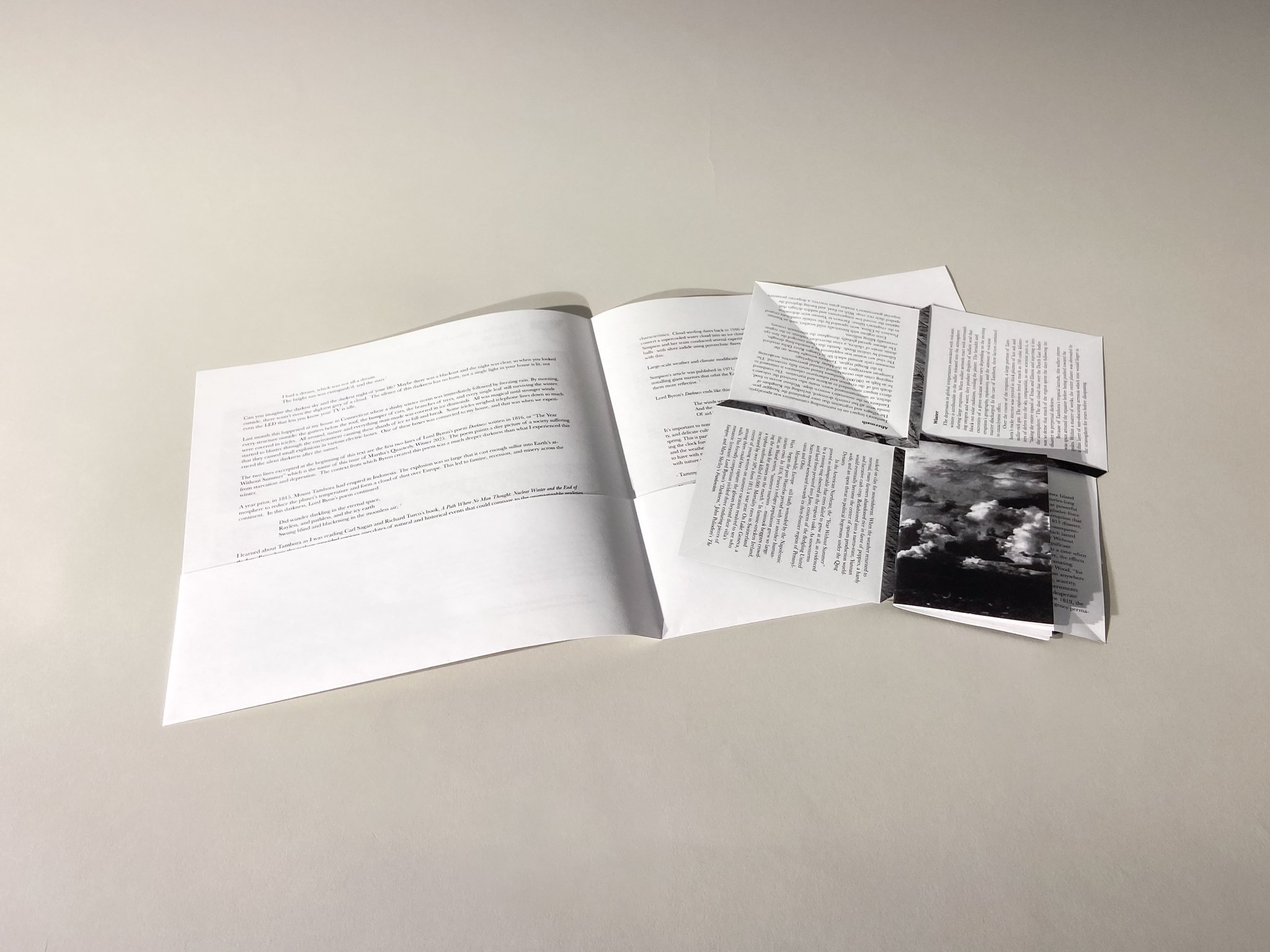


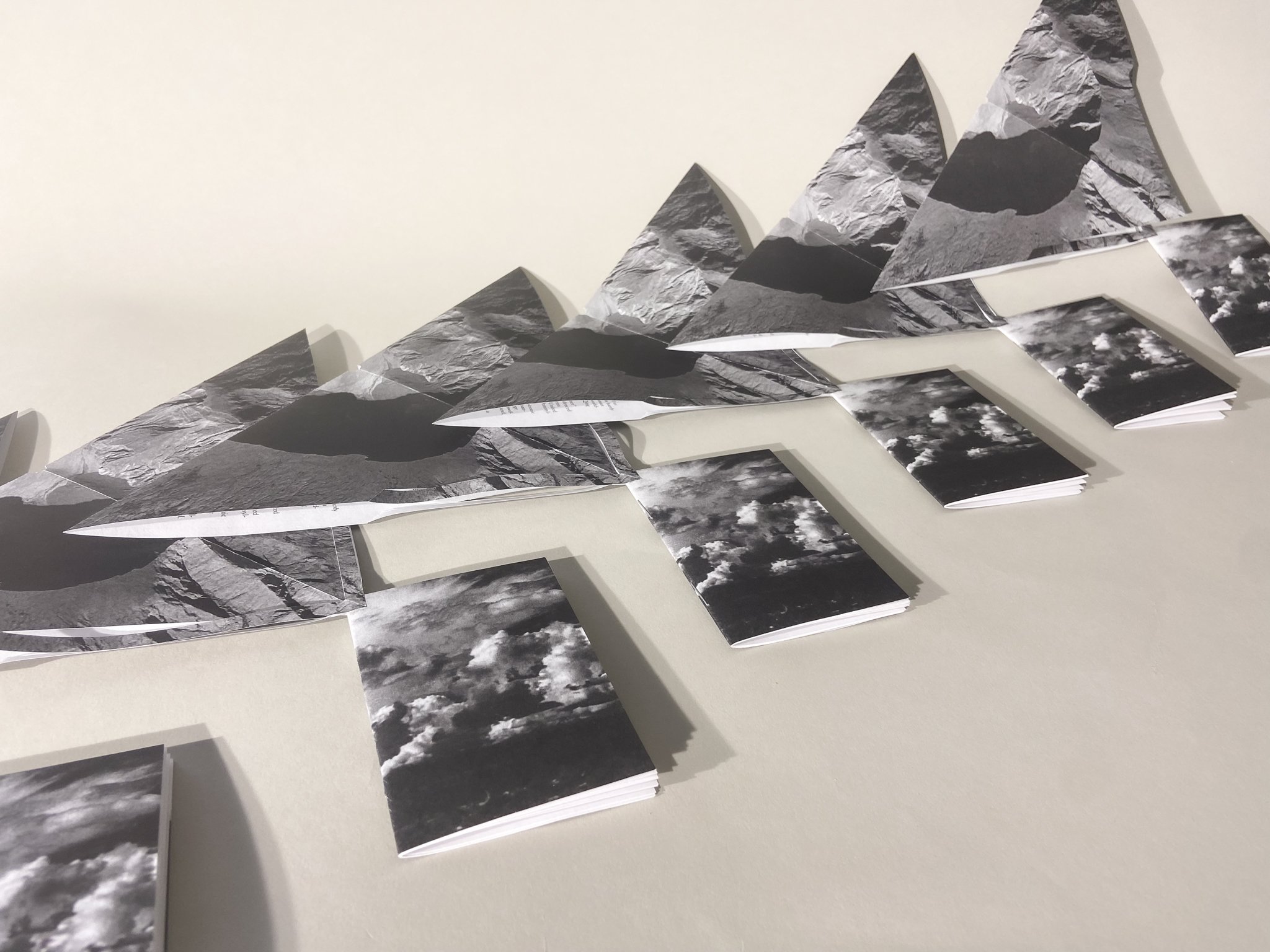

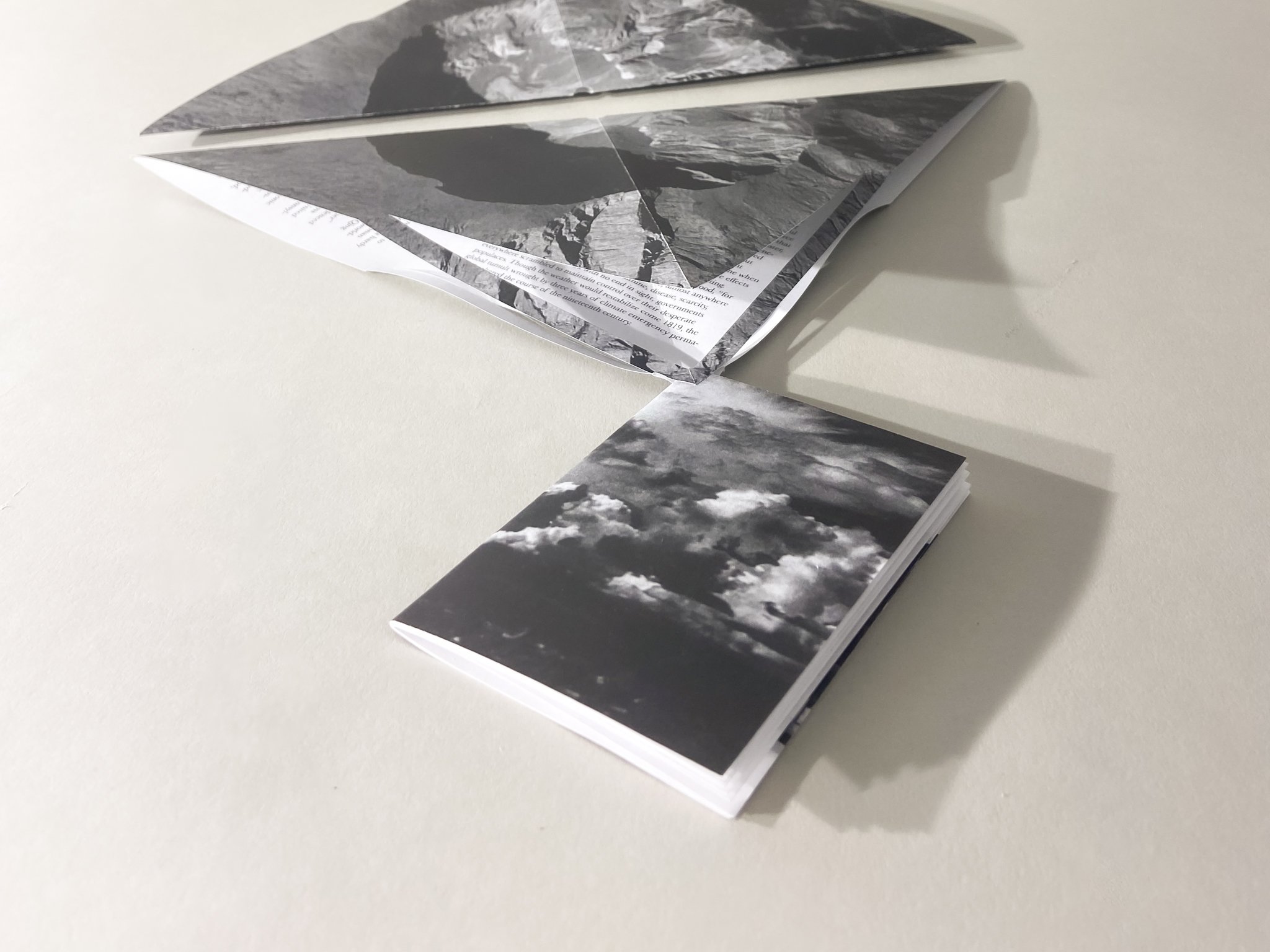
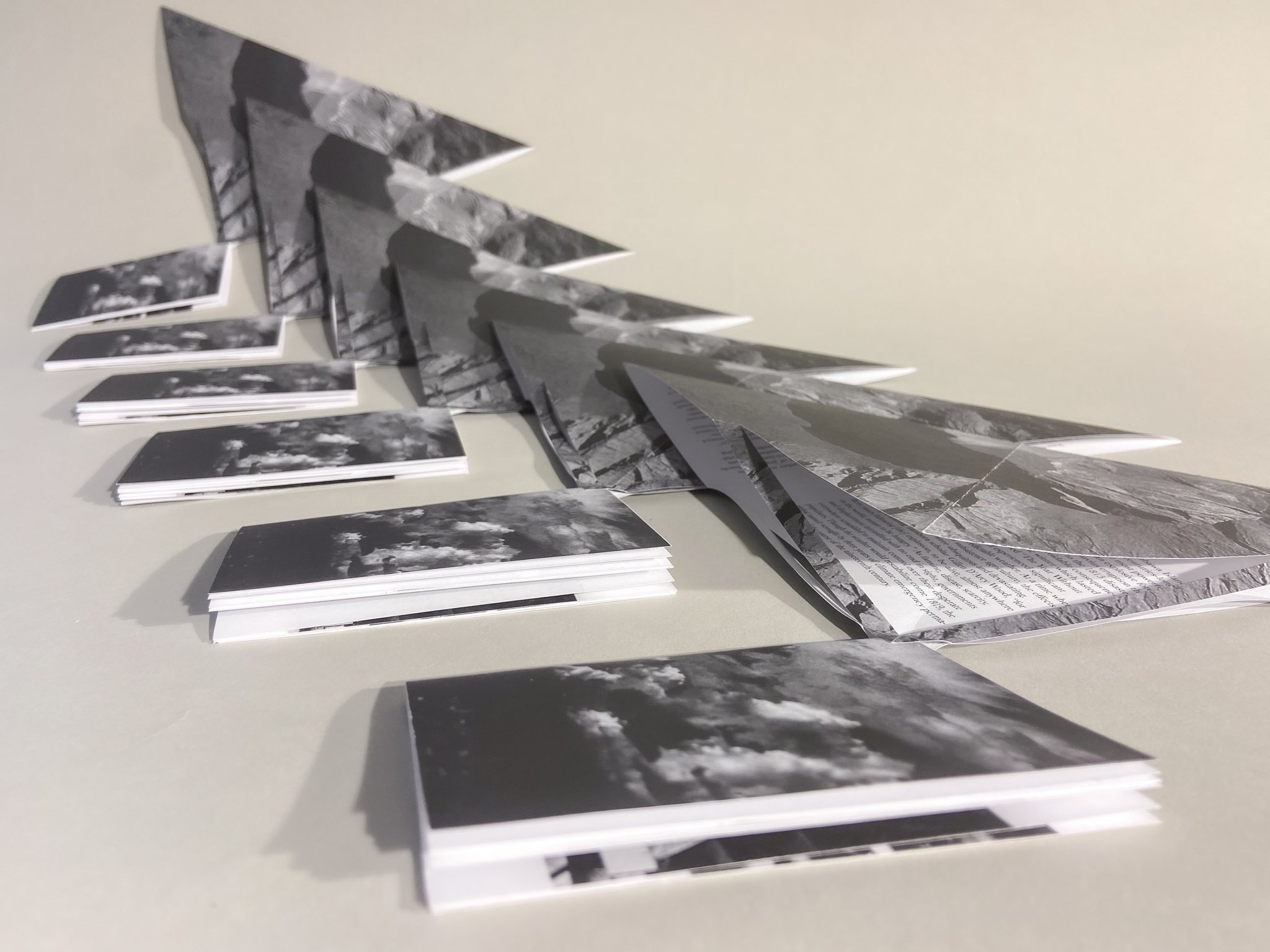



Martha's Quarterly
Issue 34
Winter 2025The Year Without Summer
~8.125” x 8.5”
About the contributors:
Joanne Simpson was the first woman in the United States to receive a Ph.D. in meteorology, which she received in 1949 from the University of Chicago. Simpson developed the first cloud model, discovered what makes hurricanes run, and revealed what drives the atmospheric currents in the tropics.
Chance Lockard is an artist, researcher, and volcano enthusiast based in New Haven, CT. He graduated from Wesleyan University in 2024 and has been an assistant at Tammy Nguyen Studio ever since.
I had a dream, which was not all a dream.
The bright sun was extinguish'd, and the stars (1)
Can you imagine the darkest sky and the darkest night of your life? Maybe there was a blackout and the night was clear, so when you looked outside, there wasn’t even the slightest grey of a cloud. The silence of this darkness has no hum, not a single light in your house is lit, not even the LED that lets you know your TV is idle.
Last month this happened at my house in Connecticut where a slushy winter storm was immediately followed by freezing rain. By morning, every structure outside: the gutters below the roof, the bumper of cars, the branches of trees, and every single leaf still surviving the winter, were covered in icicles. All around, nature and everything man-made was covered in ice diamonds. All was magical until stronger winds started to bluster through the environment causing these shards of ice to fall and break. Some icicles weighed telephone lines down so much that they caused small explosions in various electric boxes. One of these boxes was connected to my house, and that was when we experienced the silent darkness after the sunset.
The two lines excerpted at the beginning of this text are the first two lines of Lord Byron’s poem Darkness written in 1816, or “The Year Without Summer” which is the name of this issue of Martha’s Quarterly, Winter 2025. The poem paints a dire picture of a society suffering from starvation and depression. The context from which Byron created this poem was a much deeper darkness than what I experienced this winter.
A year prior, in 1815, Mount Tambora had erupted in Indonesia. The explosion was so large that it cast enough sulfur into Earth’s atmosphere to reduce the planet’s temperature and form a cloud of dust over Europe. This led to famine, recession, and misery across the continent. In this darkness, Lord Byon’s poem continued:
Did wander darkling in the eternal space,
Rayless, and pathless, and the icy earth
Swung blind and blackening in the moonless air; (2)
I learned about Tambora as I was reading Carl Sagan and Richard Turco’s book, A Path Where No Man Thought: Nuclear Winter and the End of the Arms where the authors provided copious anecdotes of natural and historical events that could compare to the unimaginable realities of a nuclear winter. I couldn’t believe that an eruption in Southeast Asia could have dismal effects on Europe a year later, and it made the fantasy of a nuclear winter much more tangible and frightening.
Morn came and went—and came, and brought no day,
And men forgot their passions in the dread (3)
Byron’s mention of “passions” is a subject I want to probe with this quarterly. Martha's Quarterly, Issue 34, Winter 2025, The Year Without Summer, opens like a parachute. The crater of Mount Tambora expands and then collects air while a small pamphlet covered in clouds anchors the whole zine down slowly, like someone escaping an aircraft. Inside are two pieces of writing. Underneath Mount Tambora’s crater is a summary by Chance Lockard of the catastrophic 1815 eruption. The small cloud pamphlet includes an article by meteorologist Joanne Simpson on cloud seeding. The combination of these two phenomena, volcanic eruptions by nature and cloud seeding by man, aims to blur notions about the sublime by juxtaposing the profundity of events created by nature and by man. When Byron’s poem mentioned forgotten passions, I thought about how recent catastrophes and global innovations have been a result of man’s unforgettable passions interwoven with nature’s forces.
I have long been interested in geoengineers. The first Martha’s Quarterly that explored the subject was in the summer of 2017 in Giant Balloons. Eight years later, I’m still awestruck by such grand human interventions with the planet’s weather and atmospheric patterns and characteristics. Cloud seeding dates back to 1946 when Vincent Schafer of General Electric discovered that small pellets of dried ice could convert a supercooled water cloud into an ice cloud. This idea developed into several projects over the next decades, and in the 60s, Joanne Simpson and her team conducted several experiments that involved seeding cumulus clouds – puffy low-lying clouds that look like cotton balls– with silver iodide using pyrotechnic flares. Some of these experiments resulted in significant rainfall. Simpson concluded her article with this:
Large-scale weather and climate modification– once a science fiction dream– may now be on our horizon. (4)
Simpson’s article was published in 1971, and today, in 2025, there are many proposals to intervene with the earth’s climate. These include installing giant mirrors that orbit the Earth, spraying sulfate aerosols into the stratosphere and modifying clouds, plants, and ice to make them more reflective. (5)
Lord Byron’s Darkness ends like this:
The winds were wither'd in the stagnant air,
And the clouds perish'd; Darkness had no need
Of aid from them—She was the Universe. (6)
It’s important to note that I am presenting the subjects of Mount Tambora and cloud seeding in a chaotic time of war, economic uncertainty, and delicate cultural tensions. I’m finishing this introduction the day before daylight savings time when the days become longer in the spring. This is partly because of the Earth’s tilt as it orbits the sun, but also because since World War I, the United States has practiced shifting the clock forward to extend the day, save fuel, and maximize the work day. Somewhere in between this 19th-century volcanic eruption and the weather-altering technology of the 20th-century is a place where man and nature must meet. The kind of relationship man wants to have with nature and vice versa seems to lie at the heart of many existential troubles today, and I hope that our civilizations’ negotiations with nature will continue with the arrival of all seasons so that with all that dies in one generation, the next can thrive.
– Tammy Nguyen
Note: To open and use the parachute zine, follow the steps demonstrated in the images on the front and back of this cover.
Bryon, George Gordon. “Darkness.” Poetry Foundation, Poetry Foundation, https://www.poetryfoundation.org/poems/43825/darkness-56d222aeeee1b.
Bryon, George Gordon. “Darkness.” Poetry Foundation, Poetry Foundation, https://www.poetryfoundation.org/poems/43825/darkness-56d222aeeee1b.
Bryon, George Gordon. “Darkness.” Poetry Foundation, Poetry Foundation, https://www.poetryfoundation.org/poems/43825/darkness-56d222aeeee1b.
Simpson, Joanne. “Increasing Rainfall by Cloud Seeding.” The Science Teacher, vol. 38, no. 9, 1971, pp. 17–21. JSTOR, http://www.jstor.org/stable/24120178.
“Geoengineering: the basics.” Geoengineering Monitor, https://www.geoengineeringmonitor.org/what-is-geoengineering.
Bryon, George Gordon. “Darkness.” Poetry Foundation, Poetry Foundation, https://www.poetryfoundation.org/poems/43825/darkness-56d222aeeee1b.
Chance Lockard’s citations:
Wood, Gillen D’Arcy, Tambora: The Eruption That Changed the World, Princeton University Press, 2014.
Wood, Gillen D’Arcy, “Tambora: The Eruption That Changed the World,” Lecture presented at the Brigham Young University David M. Kennedy Center for International Studies, Provo, UT, September 2015.
https://en.wikipedia.org/wiki/1815_eruption_of_Mount_Tambora
@passengerpigeonpress
Martha’s Quarterly, Issue 34, Winter 2025, The Year Without Summer was produced using digital printing for all of its printed components. The inner parachute, pamphlet, and outside cover were printed on 20 lb. paper. The fonts used throughout were Futura and Baskerville in different sizes and styles. “Increasing Rainfall by Cloud Seeding” by Joanne Simpson was reproduced with permission from The Science Teacher, December 1971, Vol. 38, No. 9, pp. 17-21. Copyright 1971 National Science Teaching Association. Tambora incident summary written by Chance Lockard. This issue was edited and designed by Tammy Nguyen and produced by Chance Lockard with assistance from Daniella Porras and Holly Greene.
Published in March 2025, this is an edition of 250.
